When I told people I was going to Bulgaria, they freaked out. It was 5 months after the war in Ukraine started and even though Bulgaria is petty far from Ukraine, friends, and family did not want me to go. I assured them everything would be fine.
Well, one week led to another, and I ended up spending a month in Bulgaria. It has easily become one of my favorite countries.
When I was planning my trip to Bulgaria, I thought I would stay in Sofia for the entire month. After all, that’s the capital – where all the action is, but since I am someone that likes to go off the beaten path I started to research other cities in Bulgaria which led me to the discovery of Plovdiv. Bulgaria’s second-largest city, Europe’s oldest continuously inhabited city and Europe’s culture capital in 2019.
Other than those three facts, I knew nothing about Plovdiv, but I wanted to visit, and three weeks later I was still there.
Plovdiv isn’t big compared to other cities, but yet there is so much to explore. Wandering down the quaint alley ways in old town to appreciating the history of a city that is more than 8,000 years old and Plovdiv is built around seven hills, so of course the views are amazing. Also, Plovdiv is an excellent place to base yourself if you want to take some day trips (I’ll talk more about those below).
Table of Contents
- 1 Things to do in Plovdiv
- 1.1 Free Walking Tour
- 1.2
- 1.3 Smell all the Roses
- 1.4 Stuff Your Face With all the Bulgarian Food
- 1.5 Immerse Yourself in the History and Culture at a Museum
- 1.6 Watch a Performance at an Old Amphitheater
- 1.7 Try Amazing Gourmet Doughnuts
- 1.8 Day Trip to the Disneyland of roses
- 1.9 Visit The Second Oldest Monastery in Bulgaria
- 1.10 …And Hike Up To An Incredibly Scenic Monastery
- 1.11 Discover the City’s Charming Old Town
- 1.12 Walk Along Europe’s Longest Pedestrian Street
- 1.13 Hike to Asens Fortress
- 1.14 Attend One of Many Festivals
- 1.15 Attend Kapana Fest
- 1.16 Learn about Plovdiv’s Fascinating Roman History
- 1.17 Go For A Wander in Tsar Simeon Garden Park
- 1.18 Hike Up Plovdivs Seven Hills
- 1.19 Drink Coffee at a Friends Themed Coffee Shop
- 1.20 Grab Some Honey From The Cutest Vending Machine
- 2 Where to Stay in Plovdiv
Things to do in Plovdiv
Free Walking Tour
Walking tours are my favorite way to explore a new city, and I was surprised to discover Plovdiv had three free walking tours to choose from. I did what any sane person would do. I took them all! These tours were conducted by Free Plovdiv Tours and are one of the best things to do in Plovdiv.
The city tour is what most people opt for. In just 2 hours, we saw most of the city center and old town. We had an awesome guide who grew up in Plodiv, so she knew everything about the city and gave us some insight into Bulgarian culture with some funny jokes here and there. After the tour, she gave us all great recommendations for food & things to do.
The tour runs every day at 11 am and during the weekend there is one at 2pm as well.
I had no idea that Plovdiv had an art scene. Personally, I love exploring graffiti art when I travel, so taking this tour was a no-brainer. The tour took place in the Kapana neighborhood, which is the artsy part of Plovdiv and ended in Old Town. We not only saw tons of amazing pieces of art, but also learned the differences between various types of graffiti, and learned about the talented artists behind some of the city’s most impressive graffiti art.
This Tour is only offered during the Spring & Summer
Plovdiv Socialist Architecture tour
This tour gives a look into Plovdivs rich socialist history and the architectural styles during that time. We visited several buildings such as The National Library, Communist Headquarters and even got a glimpse inside some of them.
This Tour is only offered during the Spring & Summer
A reminder that free tours are tip based, so if you enjoyed the tour, you tip your guide at the end. I recommend tipping $5-$10 per person.
Smell all the Roses
Day trips from Plovdiv are a plenty, but if you decide to wander outside the city, I suggest it be The Rose Valley.
The Rose Valley in Bulgaria is a place of immense beauty, with rolling hills and stunning views that stretch as far as the eye can see.
They are known worldwide for its rose oil production, which has been a major industry in Bulgaria for centuries,
If you ever need to disguise the smell of a dead body, you know where to go.
In fact, the Bulgarian rose oil is so highly valued that it’s often referred to as “liquid gold.”
Over 70% of rose oil is produced in Bulgaria. Making it one of the highest importers in the world. No wonder the country smells like a fancy French perfume factory.
There is even a rose festival in early June, which celebrates the beauty and fragrance of the flower and the importance of the industry to the local economy. During the festival, visitors can participate in the traditional rose-picking ceremony and learn about the history and techniques of rose oil production, as well as watch a rose parade, traditional dance performances, and see a rose queen being crowned.

Fun fact: It takes 60,000 roses to make one ounce of rose oil. Damn! No wonder it’s so expensive.
Anyway, there are two places in the Rose Valley I want to talk about: Kazanlak and Karlovo. Both worth visiting for sure. I preferred Karlovo more as a city, but really enjoyed the museums in Kazanlak and both places are super easy to get to by train from Plovdiv.
Kazanlak
Distance on Train: 3 hours and 10 minutes
Getting to Kazanlak From Plovdiv
Getting to Kazanlak requires a transfer to Karlovo, so I suggest leaving bright and early. The train to Karlovo is about 2 hours and then the train to Kazanlak is about an hour. You can either get your tickets at the train station on the day of or purchase online. I paid 4 euros round trip.
Note: make sure you check when the last train back to Plovdiv is. I had to change trains three times.
Smell the roses at a museum: A visit to the rose valley would not be complete without a stop in The Rose Museum, which is dedicated to the town’s most famous export. The museum has everything you need to know about roses, including their history, cultivation, and, of course, how to make that sweet-smelling oil. On the plus side, the entire building smells like roses, so if you really have to fart, it’s the perfect place to go.
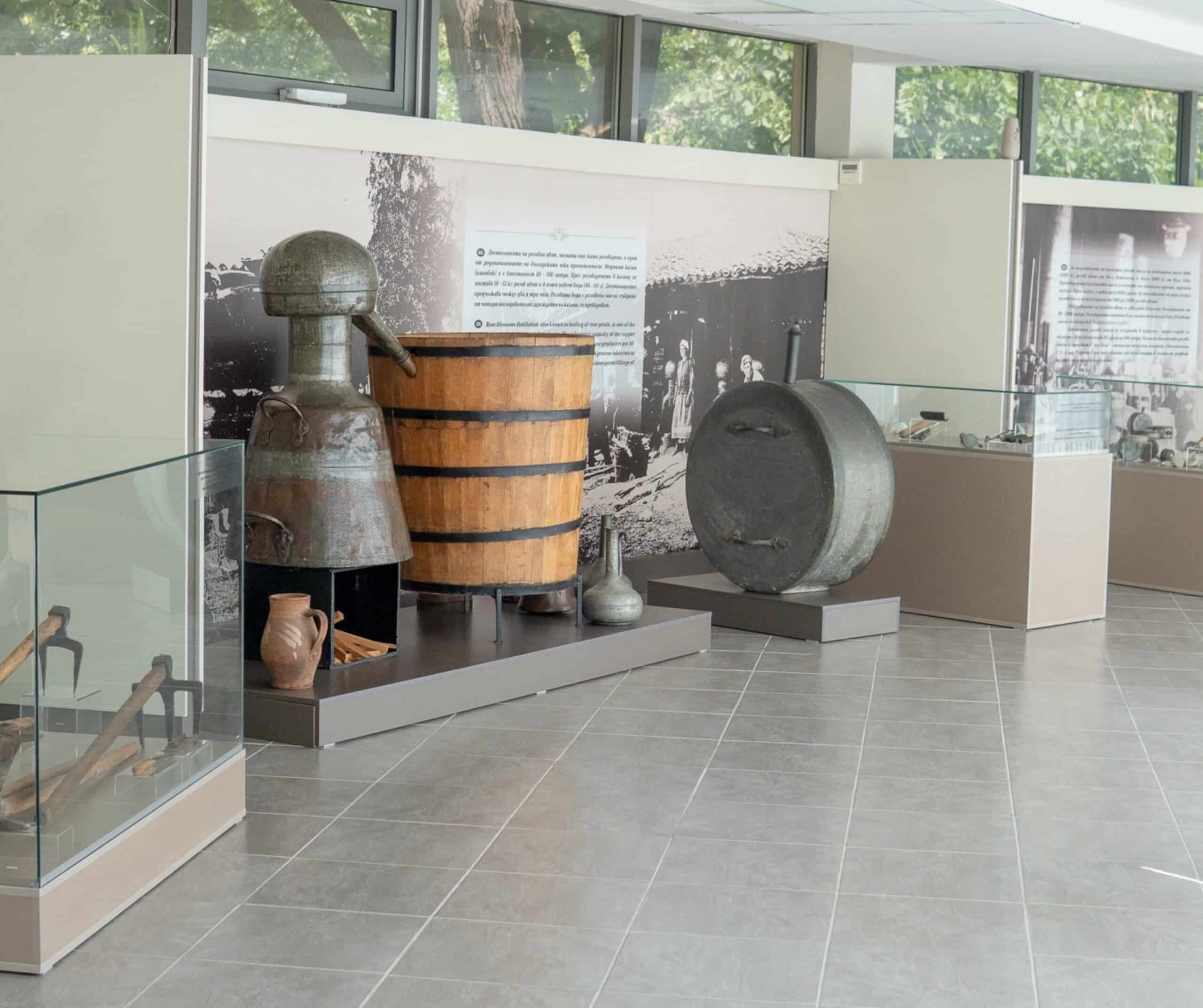
Learn about the history of The Rose Valley: If you enjoy looking at ancient artifacts like shards of broken vases or plates that have been buried for over 6,000 years, then the Kazanlak history museum is the place to be! Totally kidding. There is way more to the museum than just that. It’s home to a vast collection of archaeological and ethnographic treasures that date back to the Thracian era. This museum offers visitors a fascinating journey through the history of this beautiful region.
Pay your respects at The Thracian Tomb of Kazanlak: This is a remarkable archaeological site that serves as a testament to the ancient Thracian culture. This tomb was discovered in 1944 and is now a UNESCO World Heritage Site, but dates back to the 4th century BC. It is usually unlocked, so you can peek inside, but unfortunately when I was there it wasn’t, so I had to admire it from the outside.

Eat at a restaurant with a gorgeous view: I came upon Zornico Hotel by chance as I was trekking up a massive hill. My legs were killing me and I was starving. Typically, I am hesitant to try hotel restaurants, but Zornico was cute and the restaurant even cuter. It also came with an impressive view and if you have read my posts before, you will know, I am a sucker for a good view. The food was surprisingly good! I got the shopska salad and chicken with mushroom sauce (I was tired of Bulgarian food at this point).
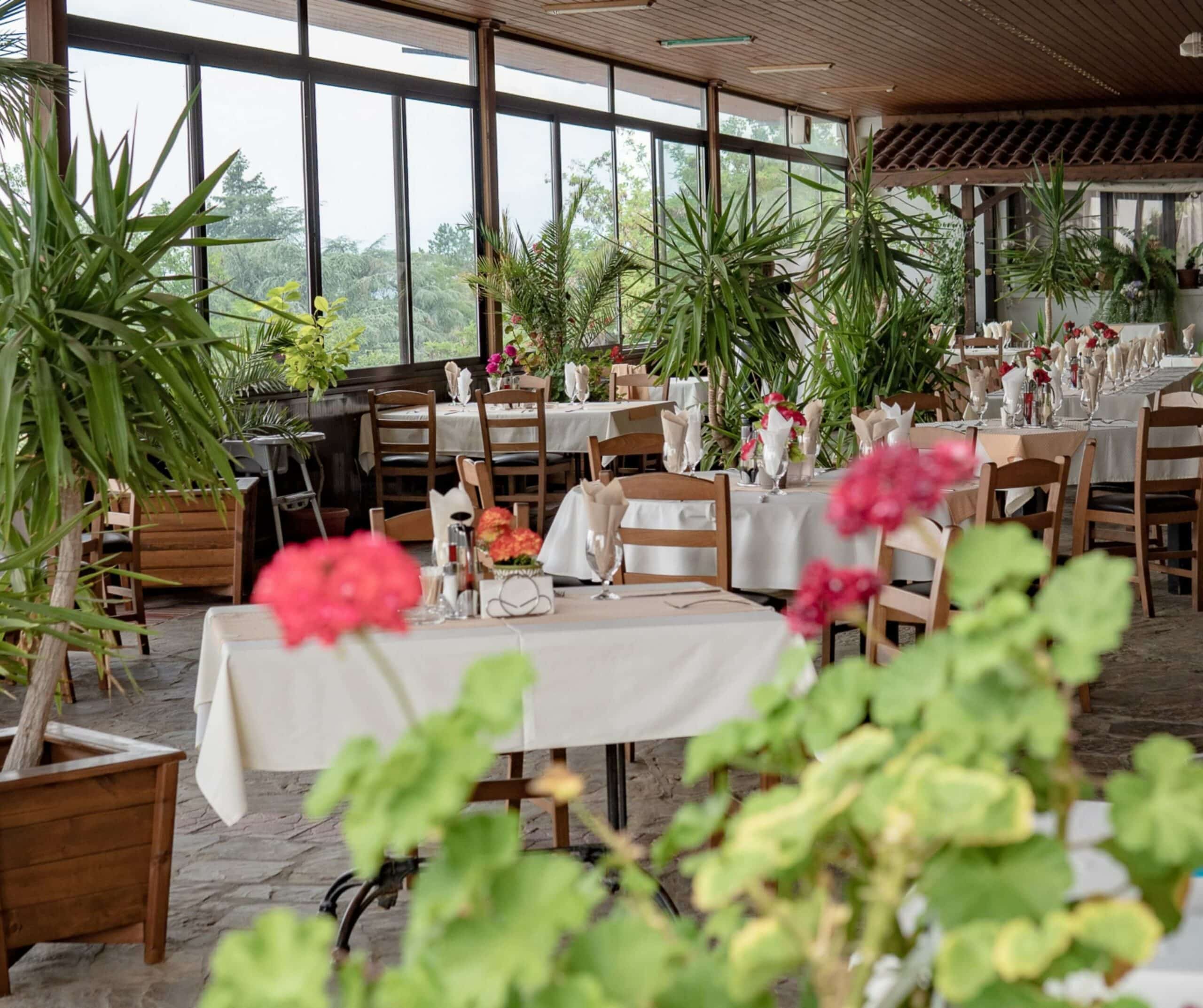
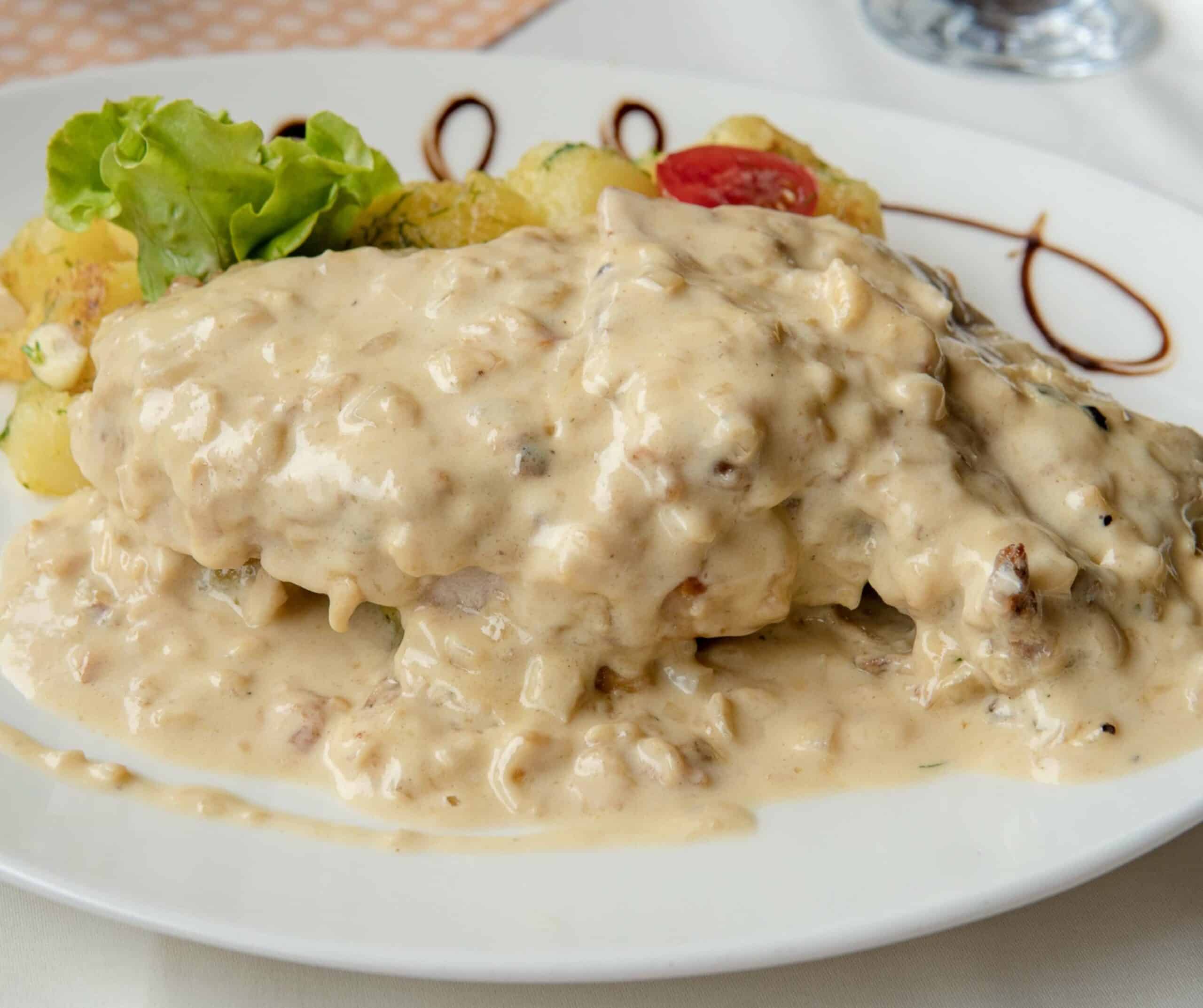
Karlovo
Distance on Train: almost 2 hours
Getting to Karlovo From Plovdiv
Luckily, there is a direct train to Karlovo. All you need to do is either buy a round trip ticket at the station or online.
Visit the Cutest House Museum: The old town of Karlovo is freaking adorable, and one of the cutest little buildings in the city is Vasil Levski house. Chances are, if you aren’t familiar with Bulgarian history that name will mean nothing, but just to get you up to speed, Vasil Levski was a prominent figure during Bulgaria’a fight for independence in the late 19th century. This house was built by his grandfather in the 18th century, and even if you have no desire to visit the house of a man you know nothing about, you should anyway. The house is set up to look like it did when he lived there and the best part, in my opinion, was the cute cobbled outdoor area/garden. There were a couple benches (which were definitely added later) where I read my book for a bit.
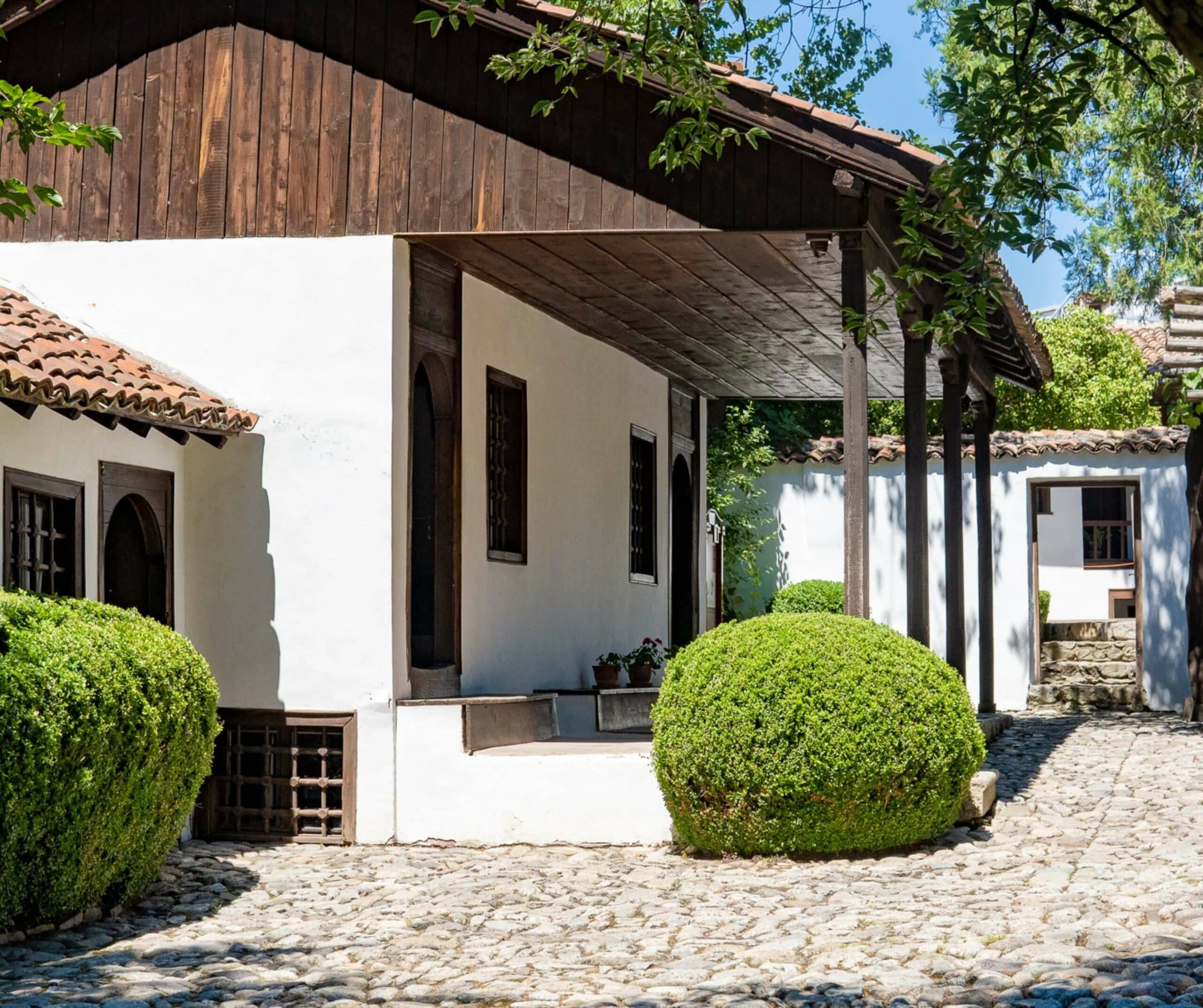
Learn about Karlovo’s history at a museum: The Karlovo History Museum was more extensive than I thought it would be. It’s one of the oldest museums in the country, with exhibits showcasing the cultural and historical heritage of the town and the surrounding area. You’ll see displays of traditional clothing and textiles as well as cool handicrafts that showcase popular trades back in the day, like, coppersmithing, leatherworking, goldsmithing, rose production etc.
Hike through Central Balkans National Park: This is the second-largest national park in Bulgaria which covers an area of 70,000 hectares, which is really friggin big. If you are day tripping to Karlovo, you probably won’t have time to get lost on a hike. I am sure running to catch your train isn’t on your travel agenda. If anything there are tons of short trails to walk along. One place I recommend checking out is Suchrum Falls which is located right on the edge of the park and about a 20-minute walk from the city center. It’s by no means an impressive waterfall, but it is a nice walk and people were swimming in the water, so if you are feeling a bit adventurous that’s also an option. Other than that, I suggest doing some exploring. Check out this awesome resource.

Grab a coffee and treat at an adorable coffee shop: You know how every Hallmark movie has at least one scene where a lonely woman finds refuge in an adorable coffee shop, that is owned by a good-looking guy who is getting over the loss of his wife and is stuck raising two kids. Well, this is exactly what Cafe Venera is like minus the good-looking guy serving coffee. The adorable coffee shop part is true, though. Cafe Venera felt very much like home the minute I walked in. It’s like the place was haunted by the ghost of coziness & warmth. It’s right down the street from the Karlovo History Museum and if you are anything like me, you will need a pick me up after a visit to any museum because all that reading can turn your brain to mush. On a nice day, grab a table outside for some serious people watching.

Get a traditional Bulgarian meal at the prettiest restaurant: And here I thought Karlovo couldn’t get any cuter, lo & behold I find a restaurant called Once Upon a Time. If you like restaurants built into historic homes, and restaurants that give you the illusion that you are visiting a country pub somewhere remote and peaceful, this place is for you. It’s situated in a revival home and my favorite part is the beautiful garden that genuinely looks like something out of a fairy tale. You will find typical Bulgarian dishes on the menu, so bring your appetite because portions are big!
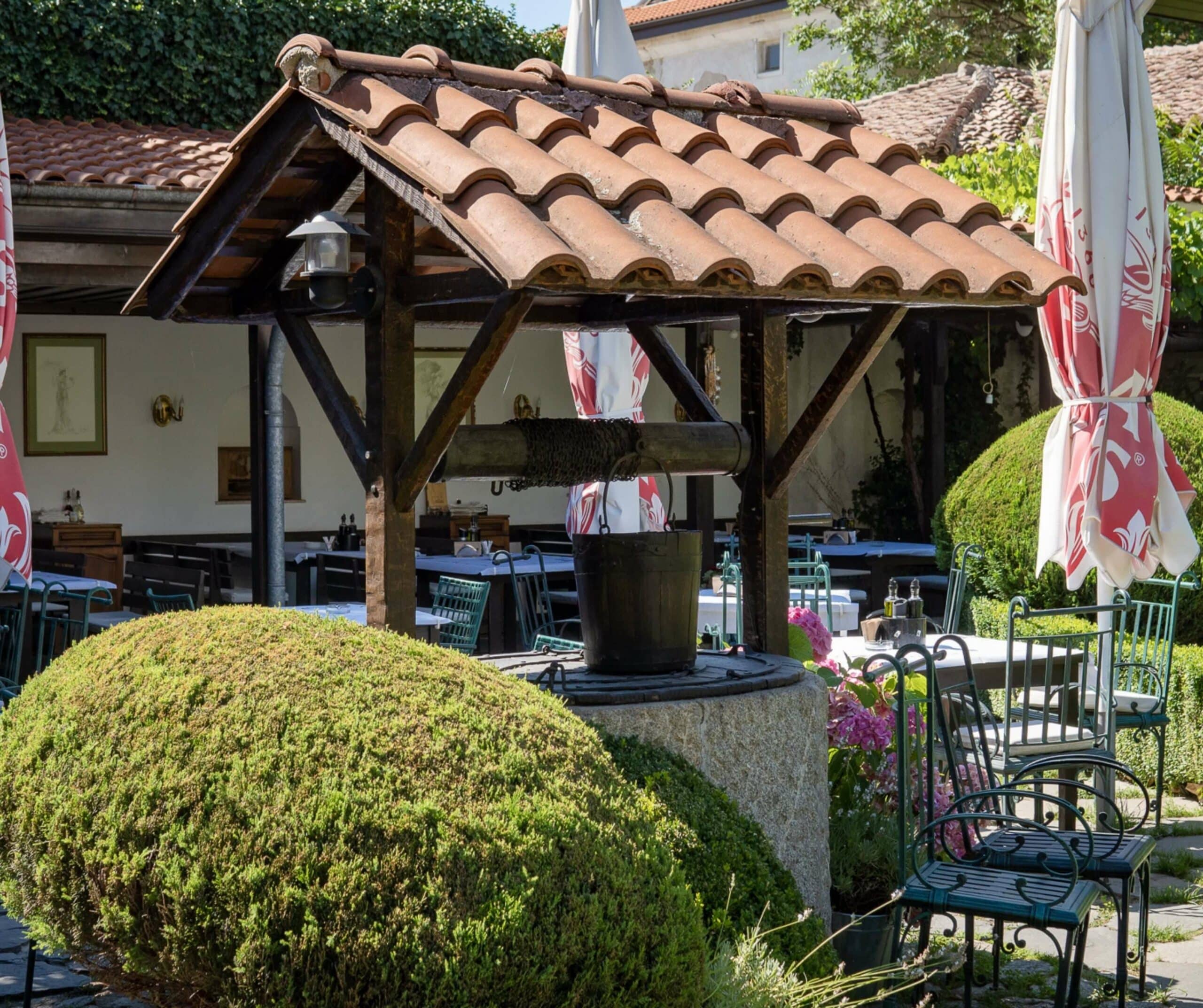
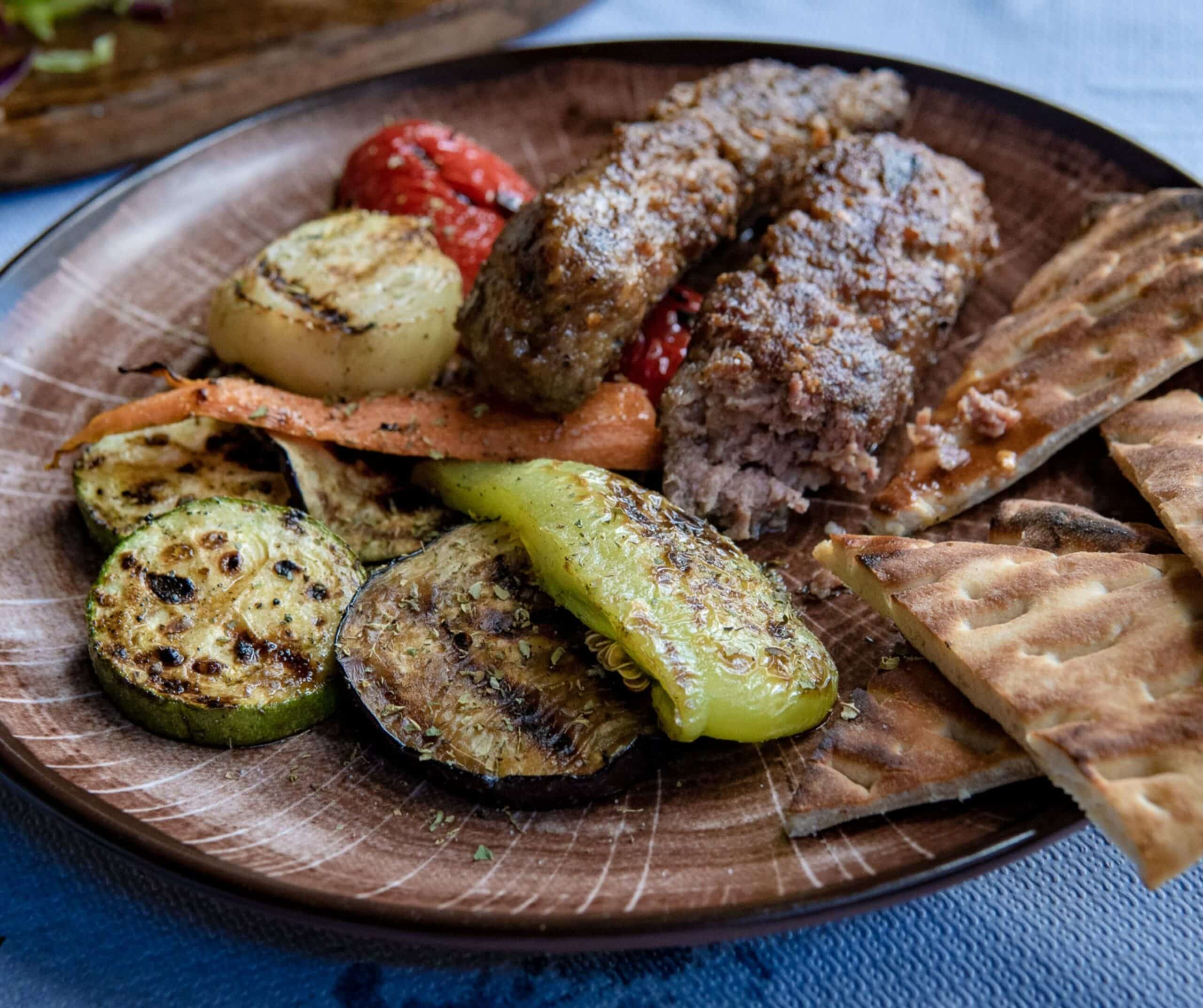
Eat delicious cake at a pastry shop: At the end of the day, nothing hits the spot more than a slice of cake and coffee. Pastry Shop Jutem is a local cake shop with an overwhelming selection. Grab a slice before heading back to Plovdiv.
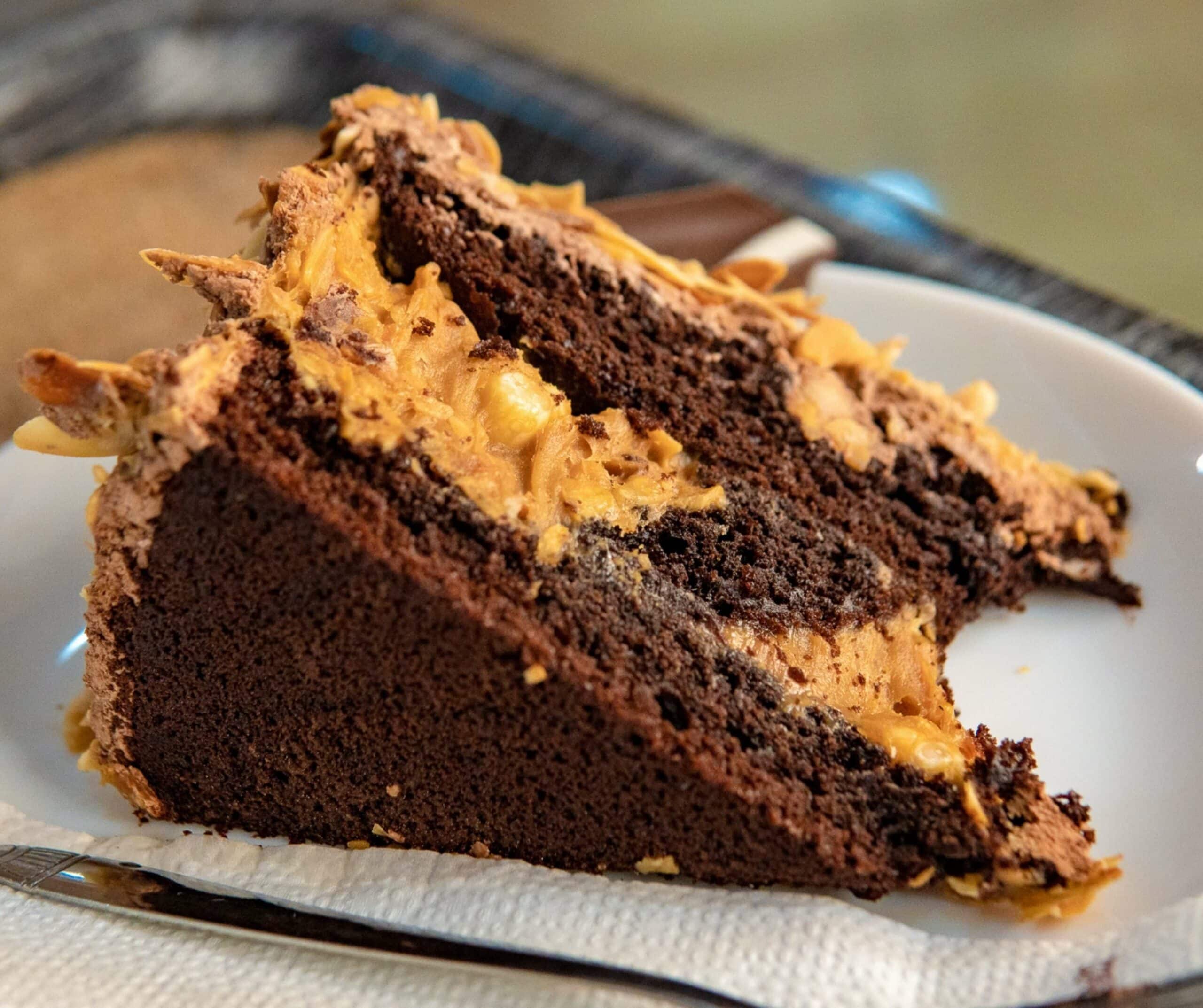
Stuff Your Face With all the Bulgarian Food
What Bulgarian Foods to Try
- Shopska salad – a refreshing salad made with tomatoes, cucumbers, peppers, onions, and grated cheese.
- Banitsa – a savory pastry made with phyllo dough, feta cheese, and sometimes spinach.
- Kebapche – grilled minced meat (usually pork or beef) served with Bulgarian spices and a side of salad.
- Tarator – a cold soup made with yogurt, cucumbers, garlic, and dill.
- Lyutenitsa – a roasted red pepper and tomato spread.
- Sarmi – stuffed cabbage leaves with minced meat and rice.
- Kavarma – a hearty stew made with meat (typically pork or chicken), onions, and peppers.
- Kyopolou – a roasted eggplant and pepper spread.
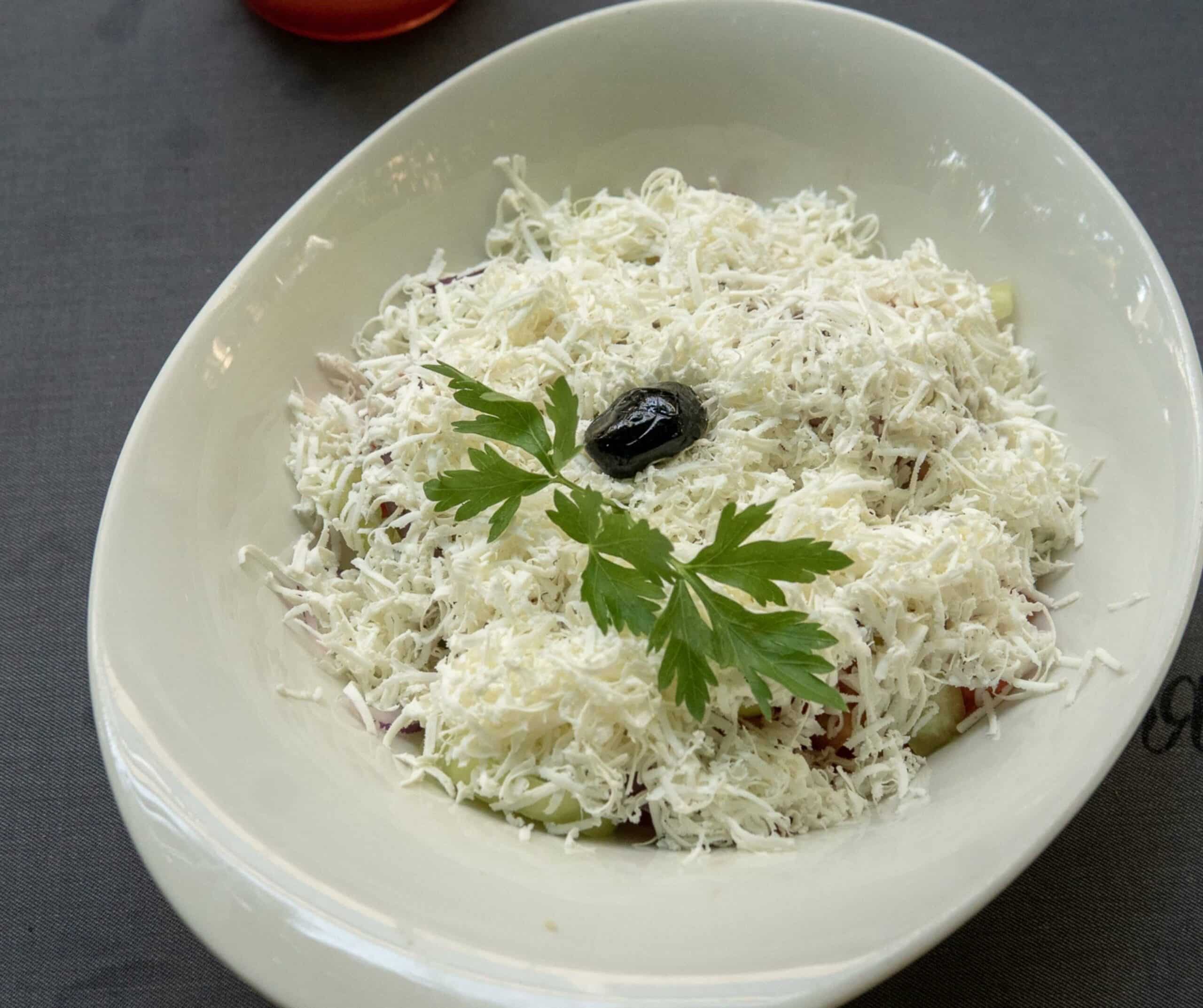
Where to Eat in Plovdiv
Pavaj | Address: ul. “Zlatarska” 7, 4000 Kapana, Plovdiv, Bulgaria
This is one of the trendiest restaurants in Plovdiv, located in Kapana, the city’s art neighborhood. During my month in Plovdiv I ate here way more times than I can count and ordered the same thing: Horse meat schnitzel with mushroom sauce and lemonade. Before you gasp and call me a terrible person for eating horse meat, it’s considered a delicacy in many countries.
In Bulgaria, horse meat consumption used to be more common, but now only a few restaurants serve it, Pavaj included! Pavaj is more expensive than other places, but the food is just too dang good and very much worth it.
Note: They are cash only, so make sure you have enough! I did not know this and had to run around like a mad woman trying to find an atm after I ate. It was quite the sight!

Restaurant Citizen Club | Address: ul. “Stoyan Chalakov” 1, 4000 Tsentar, Plovdiv, Bulgaria
Have you ever tried lamb so good and so tender that it transports you to another dimension? Well, at itizen that very well may happen. I still dream about their lamb, and it’s been over 7 months since I last had it. Citizen Club is one of the few restaurants located in old town (I expected there to be way more). Their freshly baked bread is also very good.

Rahat Tepe | Address: ul. “Doctor Stoyan Chomakov” 20, 4000 Tsentar, Plovdiv, Bulgaria
For a restaurant with the best view of Plovdiv, head to Rahat Tepe. It’s located about 30 seconds from the Nebet Tepe lookout point. They specialize in BBQ and more specifically clay plates! They are massive plates filled with meat and veggies. One should be enough for two people, but I ordered one for myself and ate all of it. It depends on how hungry you are.
They also have bread that’s to die for and since it is set up to look like a beer garden with long wooden tables, they have lots of beer choices.

Smokini | Address: ul. “Otets Paisiy” 12 Street, 4000 Tsentar, Plovdiv, Bulgaria
Smokini advertises themselves as an adventurous restaurant, which didn’t really make any sense to me when I read the menu. They seemed to have pretty standard stuff, but maybe for Bulgarians it’s adventurous? Regardless, the food was still good. The slow roasted glazed pork ribs are a must and the Shopska salad.
This is the most expensive restaurant on this list and the nicest, so definitely go if you want to splurge on a good meal.

Immerse Yourself in the History and Culture at a Museum
Museum of Natural Sciences | Address: ul. “Hristo G. Danov” 34, 4000 Plovdiv, Bulgaria
This is one of the oldest museums in Bulgaria. It was founded in 1882 and has been continuously operating since.
The museum, is like a treasure trove of all things weird and wacky in the world. Want to see a giant fossilized dinosaur? Check! Want to learn about the life cycle of a butterfly? Check! Want to see a stuffed bear that looks like it’s about to come alive and attack you? Double check!
Inside, you’ll find fossils and bones galore, so you can get up close and personal with some prehistoric beasts. They have a whole menagerie of animals to check out, from tiny bugs to gigantic elephants. You can learn about the critters that crawl, swim, and fly around Bulgaria and beyond.
But the museum doesn’t just focus on the animal kingdom, they’ve also got some geological gems, a planetarium, an entire exhibit on Botany and an aquarium!
Regional Museum of History
In Plovdiv, there are 4 Regional history museums, all covering different parts of Bulgarian history.
The Unification of Bulgaria 1885 | Address: 1, Saedninenie Sq.
The Union of Bulgaria Museum in Plovdiv is like a time machine that takes you back to the era of the Bulgarian Revolution. You’ll see artifacts that tell the story of how Bulgaria was born as a modern nation.
Basically, back in the day, Bulgaria used to be split up into a bunch of different regions with different rulers. But then in 1885, they all came together and became one big happy family (well, sort of). And that’s what this museum is all about – the history of that unification.
Inside the museum, you can see all sorts of cool stuff like old maps, paintings, and weapons.
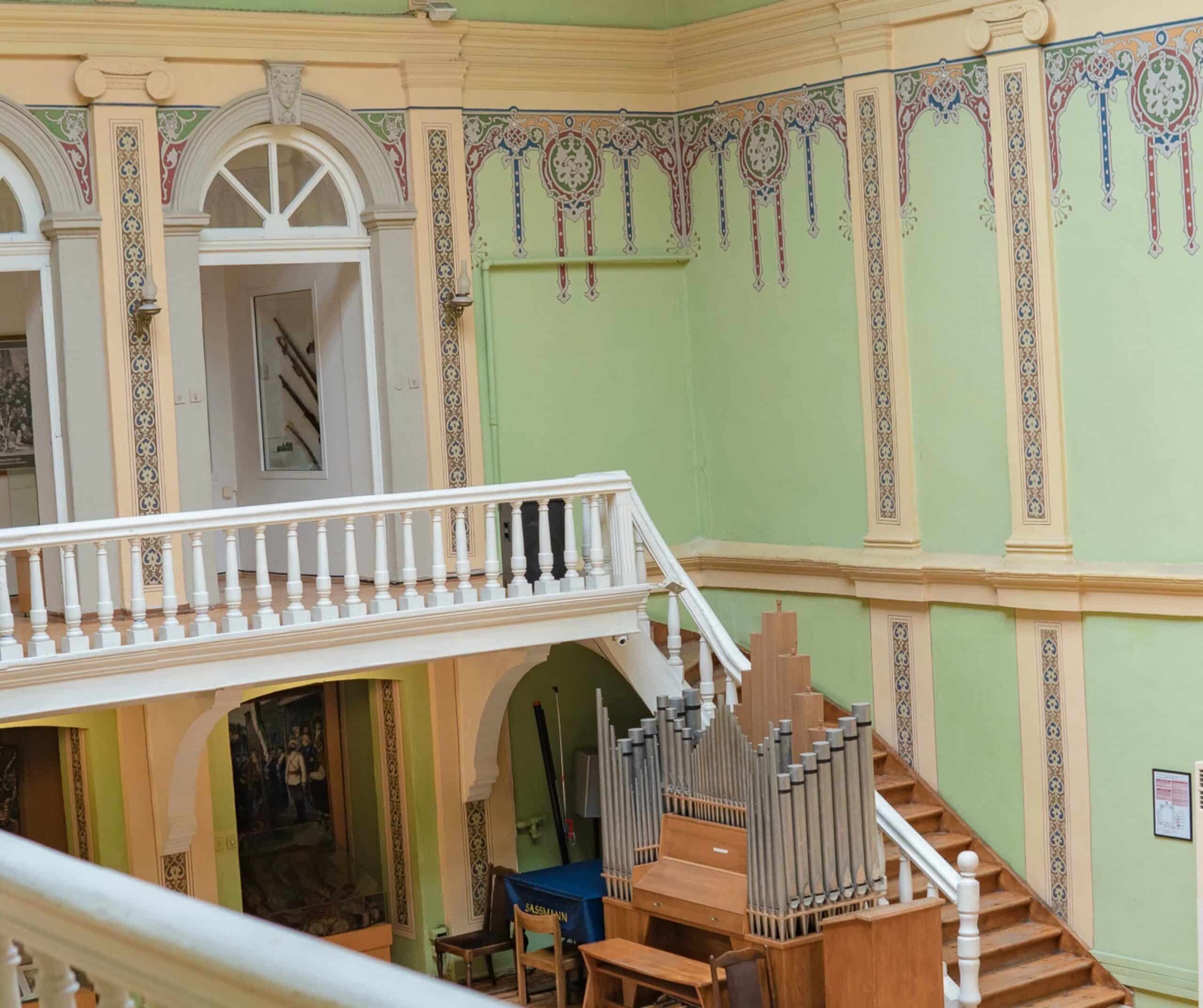
Bulgarian National Revival Museum | Address: 1, Tsanko Lavrenov Str.
In the National Revival Museum, you’ll see all sorts of things. You’ll learn about the rise of the Bulgarian literary and cultural movement, the first schools, and the struggles for national liberation. You’ll also see the fascinating transformation of the Bulgarian society, from a rural and patriarchal system to a modern and democratic one.
Book Publishing in 19th-20th Century | Address: 2, Mitropolit Paisiy Str.
This Museum will take you back to a time when the printing press was all the rage. You will learn about the history of Bulgarian literature and the process of writing books and book binding. You might even get a demonstration of how the printing press works.
Museum of Modern History | Address: ul. “Angel Bukureshtliev” 14, 4000 Plovdiv, Bulgaria
To be honest, this is one museum you shouldn’t visit. There were only a few artifacts on display, and all the text was in Bulgarian. I would say go for it if the museum was free, but paying to visit is a rip off. The museum is only one room and I went through the entire place in 10 minutes.
Regional Museum of Archeology | Address: pl. “Saedinenie” 1, 4000 Tsentar, Plovdiv, Bulgaria
What better way to immerse yourself in Plovdivs rich history than by visiting the Regional Museum of Archeology?
Now, let’s get one thing straight: if you’re looking for a museum that is going to entertain you with interactive exhibits and flashy displays, then this might not be the place for you. But, if you’re a history buff who loves to dig deeper (no pun intended!) into the past, then this museum is for you!
From the Thracian era to the Roman empire, you’ll get to see some of the most remarkable artifacts from Plovdiv’s past.
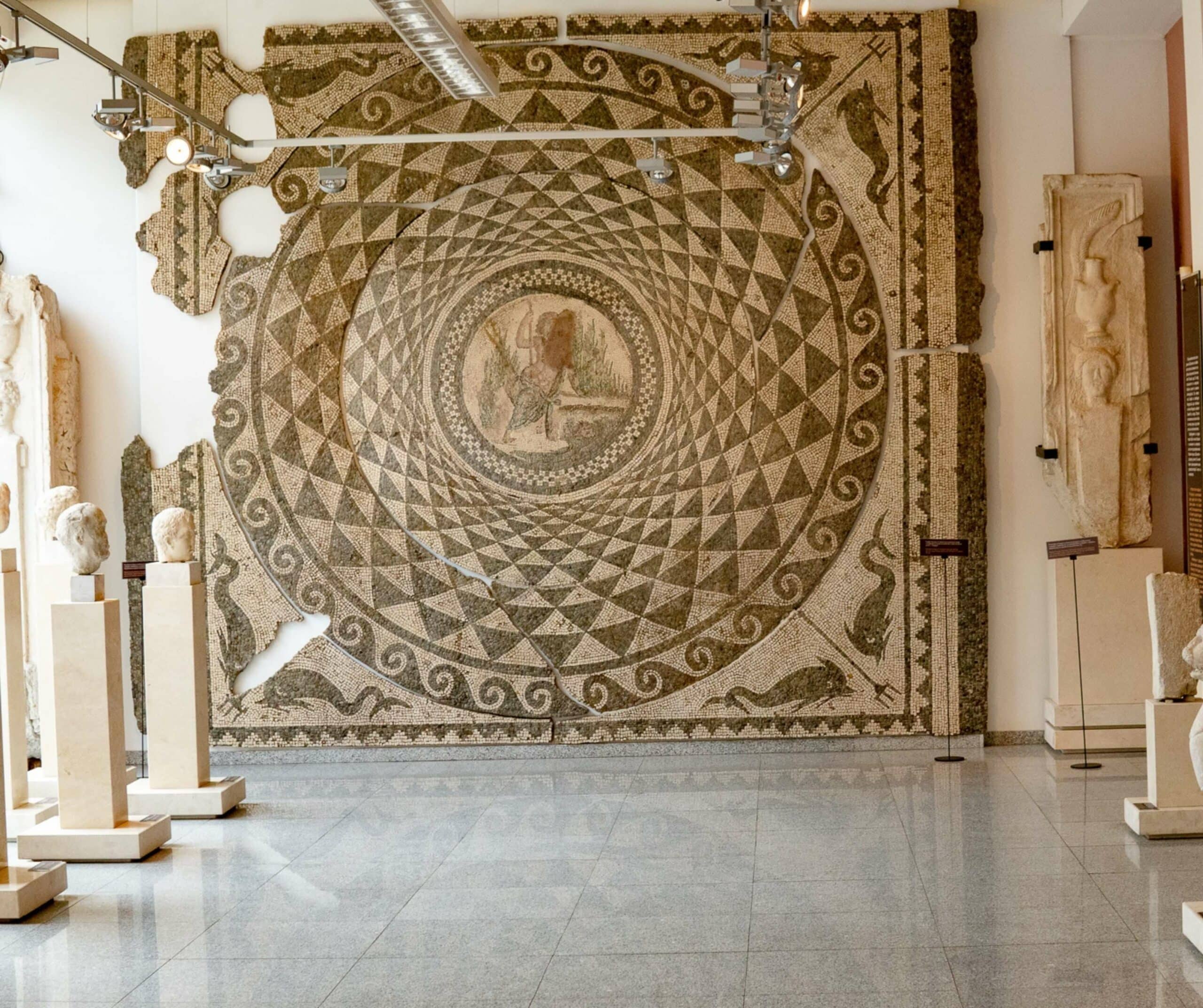
This museum is not just about the artifacts themselves, but also about the stories behind them.
For example, did you know that the ancient Thracians believed that the afterlife was a giant party where they would drink, feast, and dance with their ancestors? Or how about the fact that the Romans used urine as mouthwash to whiten their teeth? Yeah, let that sink in for a minute.
Watch a Performance at an Old Amphitheater
Address: ул. Цар Ивайло 4, 4000 Tsentar, Plovdiv, Bulgaria | Website
The Ancient Theatre of Philippopolis, as it is commonly known, is an open-air theatre that was constructed during the 1st century AD. It was one of the largest and most impressive theatres of the Roman Empire, with a seating capacity of up to 7000 people.
The theatre was discovered in the 1970s during excavations in the Old Town of Plovdiv. Since then, it has been partially restored and has become a popular tourist attraction. Visitors can marvel at the theatre’s magnificent stage, orchestra, and tiers of seating. The theatre is still used today for various performances and events, such as the International Folklore Festival which is free.

But what made the Ancient Theatre of Philippopolis so impressive? For starters, it was built into the side of a hill, which provided natural acoustics and made it easier for the audience to see and hear the performers. The theatre was also adorned with elaborate decorations, such as statues, reliefs, and frescoes, which added to its grandeur.
In ancient times, the theatre was used for various events, such as plays, concerts, and gladiatorial contests. It was a hub of entertainment and culture, drawing people from all over the Roman Empire.
Visiting the Ancient Theatre of Philippopolis gives you a chance to see how the ancient Romans enjoyed their entertainment and to marvel at the ingenuity and creativity of the people who built such a magnificent structure.
Every summer, the opera open takes place at the Ancient Theatre of Philippopolis. It features various performances by opera singers, ballet dancers, and orchestras from Bulgaria and abroad. The festival is aimed to bring classical music to a broader audience and to promote Plovdiv’s cultural heritage. I saw a ballet based on Anna Karenina and it was fantastic!
To get tickets for a performance, check out this resource or head to the tourism office and inquire about tickets there. They will point you in the right direction!
Try Amazing Gourmet Doughnuts
Address: ul. “Otets Paisiy” 29, 4000 Tsentar, Plovdiv, Bulgaria | Website
Do you like starting your day with a fluffy doughnut and a cup of coffee? It’s a classic American breakfast, and in Plovdiv, Bluestone Doughnuts could rival any doughnut shop in the states. I got their Pistachio doughnut and was blown away.
The owners are constantly experimenting with new flavor combos, but one thing stays the same: The doughnuts melt in your mouth. They have salted caramel, cherry pie, boston cream and tons of other flavors to choose from.
I came here on my last day in Plovdiv which was probably a good thing because I would have come every single day otherwise and three weeks of doughnuts would be a bit much. Their menu is always changing, so make sure to come by more than once to try their latest creations. And trust me, one doughnut won’t be enough. You will be waddling out of this shop filled with fried, sugary dough.

Day Trip to the Disneyland of roses
Address: ul. “Parvi may” 24, 6148 Skobelevo, Bulgaria | Website
Damascena Ethnographic Complex is like Disneyland, but without the rides. I know, that doesn’t sound too fun, but who says you need rides to have fun? Anyway, this complex is a delightful blend of traditional architecture, cultural exhibits, and rose-infused goodies. The locals here take their roses seriously – we’re talking about a centuries-old tradition of cultivating the finest Damask roses for perfume and culinary purposes.
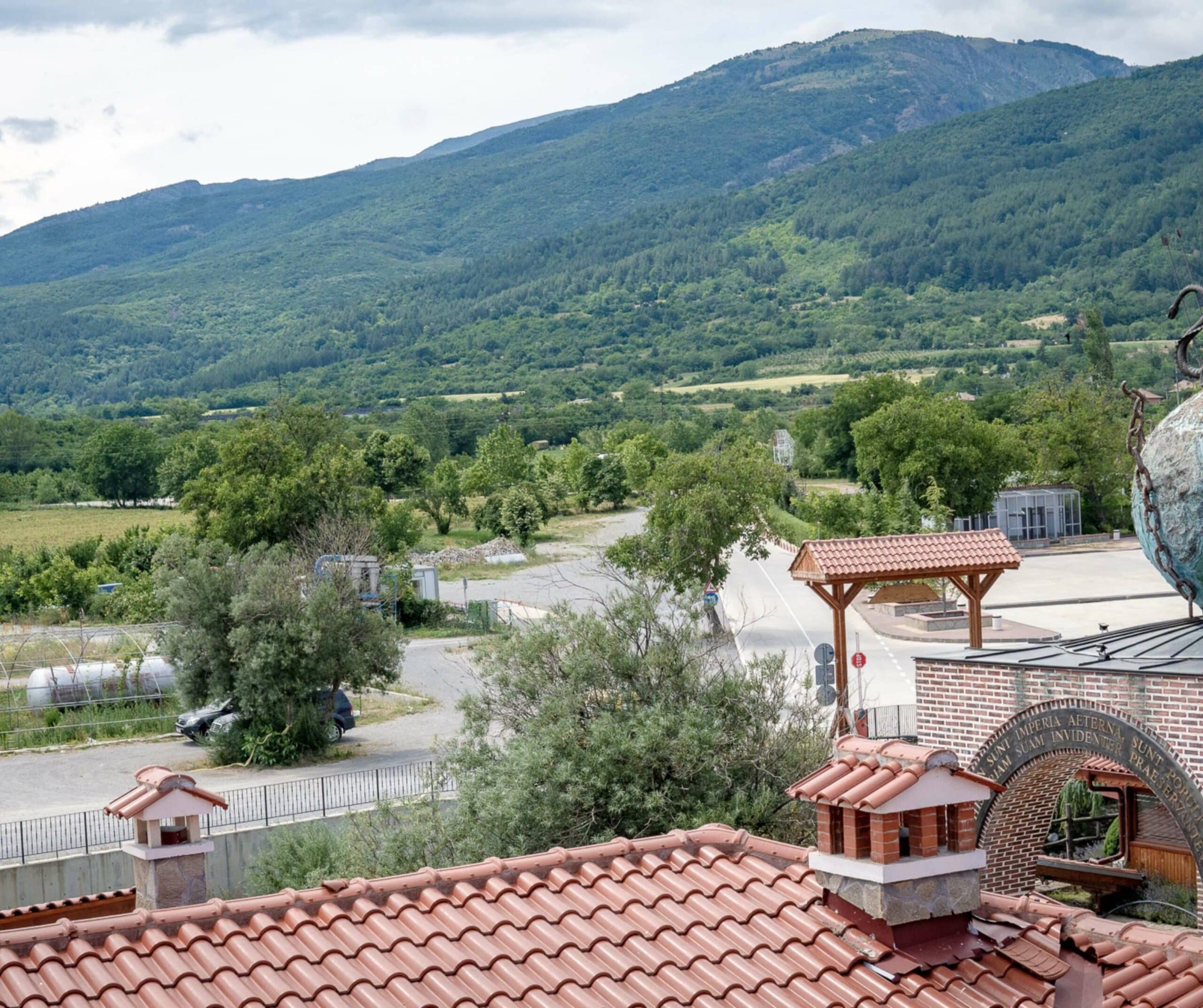
You won’t be bombarded with stuffy lectures about botany and agriculture. Instead, you can explore the complex’s various attractions, from the Theracian cultural center (where you can look at and learn about ancient artifacts found in The Rose Valley) to the distillery (where you’ll witness the magic of rose oil extraction), which involves a lot of boiling, condensing, and praying to the rose gods for good measure.
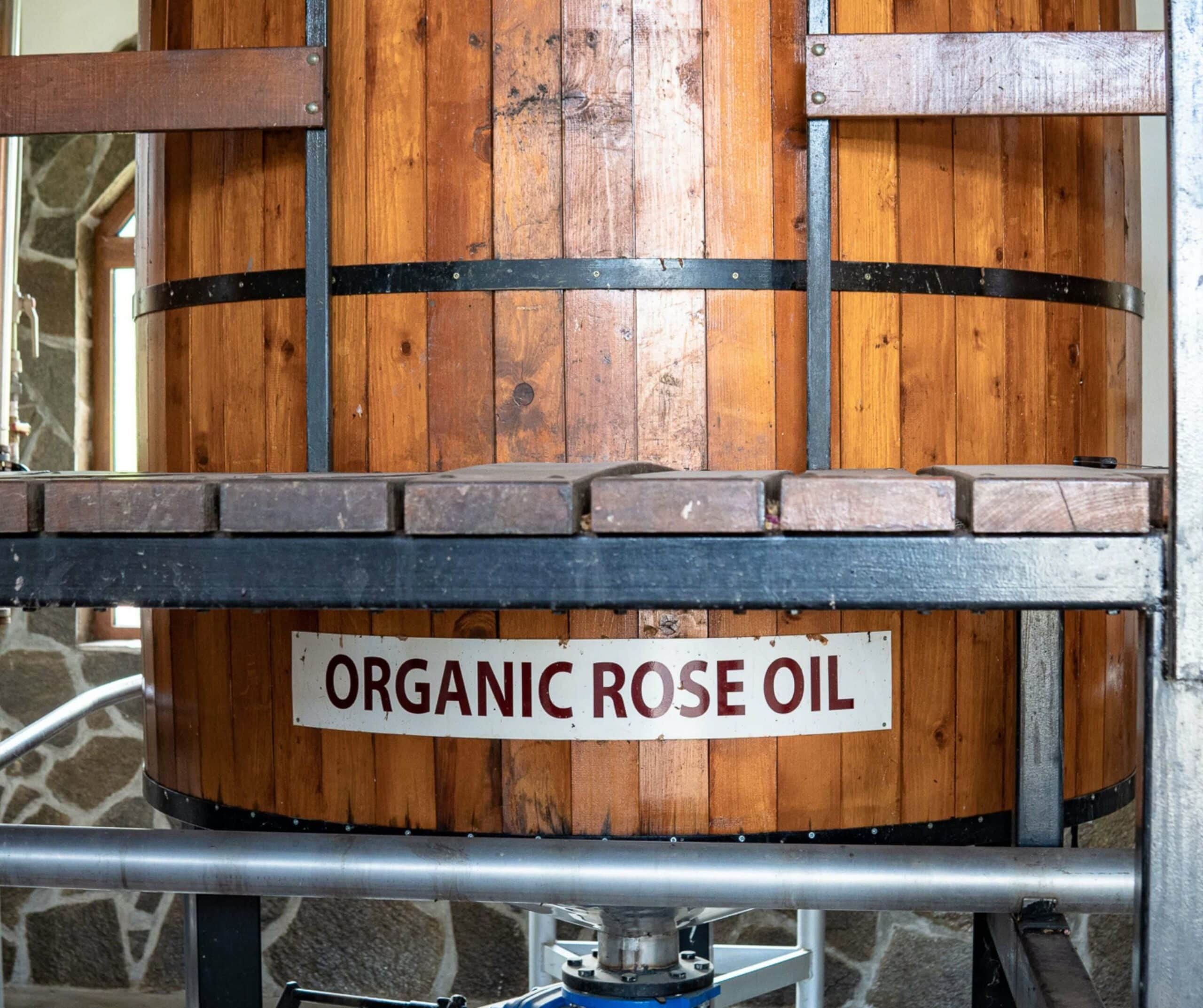
There are beautiful paintings on the walls of the distillery depicting how rose oil was produced in the old days.

Feeling peckish? Head over to the restaurant and indulge in some rose-infused treats, like rose cake or a rose infused latte or if you are feeling like an entire meal, they have traditional Bulgarian food as well. If you’re feeling adventurous, you can even try some rose rakia (a type of brandy) – just don’t blame me if you wake up with a rose-induced hangover.
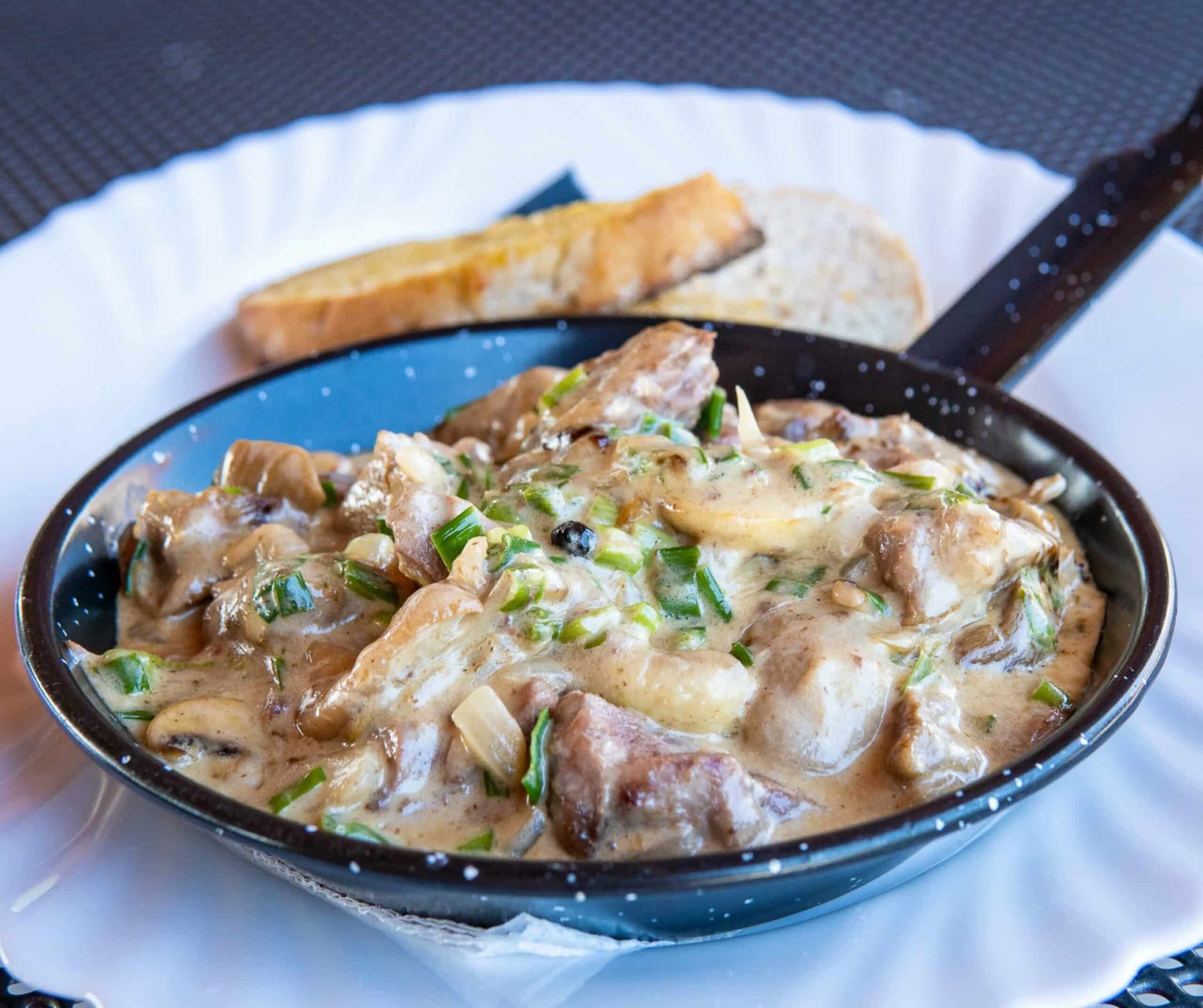
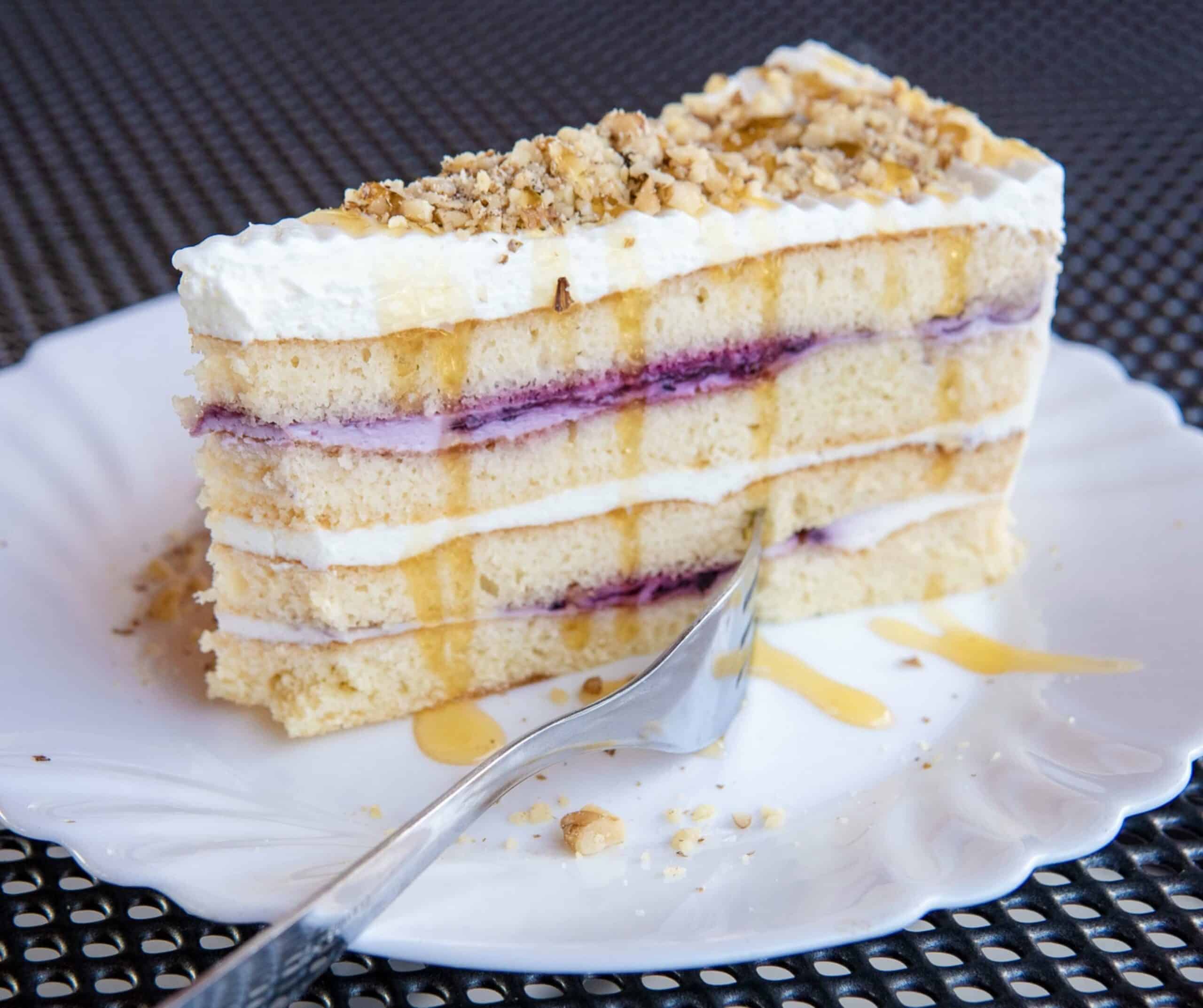
Of course, no visit to the Damascena Ethnographic Complex is complete without a stroll through the lovely gardens, where you’ll be surrounded by the sweet scent of thousands of roses in bloom. Sit on one of the many benches and take it all in.
The Damascena Ethnographic Complex is a charming and unique destination that’s sure to leave you with a newfound appreciation for the humble rose. Who knew that a flower could be so complex?
To get to Damascena Ethnographic Complex from Plovdiv, you can follow these steps:
- Take a bus from Plovdiv Central Bus Station to Karlovo. Buses run regularly throughout the day, and the journey takes approximately 1 hour and 15 minutes.
- Once you arrive at Karlovo Bus Station, take a taxi to Damascena Ethnographic Complex. The complex is located approximately 6 kilometers outside of Karlovo, so the taxi ride should take about 10-15 minutes.
Alternatively, you could also rent a car in Plovdiv and drive to Damascena Ethnographic Complex. The journey takes approximately 1 hour 32 minutes and follows Route 64 through the mountains. The complex has ample parking available.
Visit The Second Oldest Monastery in Bulgaria
Address: 4251 Бачковски манастир, Bulgaria | Website
Bachkovo is a gorgeous monastery located in the Rhodope mountains. It’s been around for over nine centuries and has survived everything from Ottoman rule to Byzantine wars. Bachkovo was founded way back in 1083 by a dude named Grigoriy Bukuriani.

The monastery was initially run by Georgian monks, and in the 11th century they set up a school where they taught religion, math, history, and music.
All good things must come to an end
In the 14th century, the Ottoman army ransacked the monastery, destroying many of its valuable artifacts and manuscripts. Luckily, The monastery was restored by the end of the 15th century.
Today, Bachkovo is still going strong as the second-oldest monastery in Bulgaria. It’s one of the most important religious sites in the country, and people come from all over to see it.

To get to Bachkovo Monastery from Plovdiv, you can take a bus or taxi.
By Bus:
- Go to the South Bus Station in Plovdiv.
- Look for a bus heading to Bachkovo Monastery. There should be several options available.
- Buy a ticket and board the bus.
- The journey should take around 30-45 minutes, depending on traffic and the specific bus you take.
By Taxi:
- You can also hire a taxi from Plovdiv to Bachkovo Monastery.
- It is recommended to negotiate the price beforehand to avoid any confusion or misunderstandings.
- The journey should take around 20-30 minutes, depending on traffic.
…And Hike Up To An Incredibly Scenic Monastery
Address: Кукленски манастир, 4101, Bulgaria | Website
This is the prettiest monastery I have ever visited. Like, the views alone were worth the trip, but the history of this place is crazy.
Kuklen Monastery was founded during the Second Bulgarian State. Legend has it that this place sprung up around a spring of water that could cure mental illness! Talk about a miracle! People believed that spending a night there could cure them. And at one point, when mental illness was still a mystery, they used to chain the poor souls to the floor.
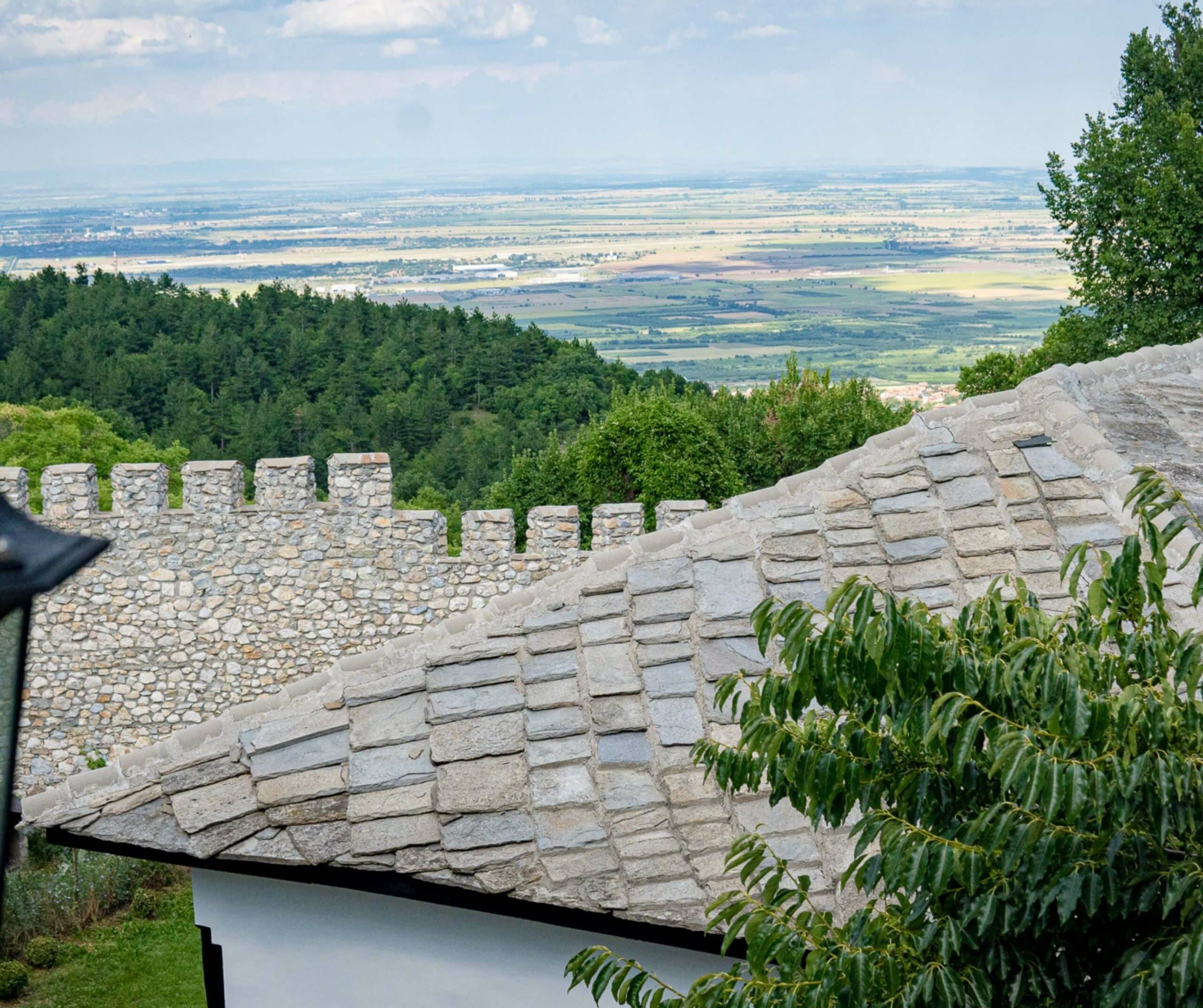
The monastery was named after Saint brothers Kozma and Damyan, who were known for their curative capabilities, and it quickly became a religious haven for those in need of some serious healing.
During the Ottoman Rule, even the Turkish rulers protected the monastery because their families had been cured there. They even survived the Christians-turned-Muslims purge in 1657, when a bunch of other monasteries and churches were completely destroyed. But alas, even the Kuklen Monastery couldn’t escape the wrath of the 20th century. Parts of it were completely burnt down.
In the 17th century, the Kuklen Monastery became a major cultural center, churning out grammarians, calligraphers, and transcribers like it was nobody’s business!
But the best part is the annual holiday on Peter’s Day, June 29th, where they take out an icon of Kozma and Damyan, which is said to be a miracle worker. It’s like the best day of the year, and everyone parties for three days straight.

So Kuklen Monastery is magical, y’all. It’s a place where sick people were chained up and healed, crazy parties were held, and a pair of saintly brothers still work miracles to this day.
To get to Kuklen Monastery from Plovdiv, you can take the following steps:
- Take a taxi or public transport to the Plovdiv bus station (also known as “South” or “Yug” in Bulgarian).
- From the Plovdiv bus station, take a bus heading to Kuklen village. There are several buses per day, and the trip takes around 20-30 minutes.
- Once you get to Kuklen village, you can either take the easy way up to the monastery by cab (if you can find one) or take the more difficult path, (but way more exciting) by walking for an hour. If you choose to walk, there is a well-marked hiking trail that leads to the monastery and takes about an hour.
Alternatively, you can also hire a taxi or rent a car in Plovdiv and drive to Kuklen Monastery directly. The monastery is located about 15 km southeast of Plovdiv and can be reached in about 20-30 minutes by car..
I wanted to get a cab, but couldn’t find one, so I walked and to my surprise it was actually very pretty. I passed by farms and waterways. I even passed by people camping and walked through a random festival.
Note: I used Google Maps to find the monastery and suggest you do the same. The hike was easy enough, with nothing too crazy.
Discover the City’s Charming Old Town
Old Town, or as the locals call it, “Старият Град” (Stariyat Grad), which roughly translates to “The Old City,” is a place where time seems to have stood still. It’s also a place where you can easily get lost in the maze-like streets and end up wandering in circles for hours – definitely not speaking from experience.
You’ll find so many things to see in Old Town. From the Roman Theatre, to the Ethnographic Museum where you can learn about Bulgarian culture and of course the many house museums that will show you what life was like for the rich in the 1800s. Old Town was one of my favorite places to explore in Plovdiv. I ended up staying there for the duration of my trip.
I will warn you though, the cobblestones in old town aren’t like typical cobblestones. They are HUGE with big gaps and if you aren’t careful it’s easy to get your foot stuck. This happened to me when I was leaving my hostel with my suitcase. I tripped and fell and all my stuff went flying everywhere. My leg hurt for about 2 months after.

Here are the things I recommend doing in Old Town:
Discover the house museums of old town
Hindlian House | Address: ul. “Artin Gidikov” 4, 4000 Tsentar, Plovdiv, Bulgaria
Stepan Hindlian was a wealthy Armenian merchant who had a passion for all things art and culture. He traded art, textiles, wine, silk and really anything valuable.
He lived in one of the fanciest and most expensive houses in Plovdiv and this city was not short on impressive houses. This place was like the Beverly Hills of Bulgaria back in the day.
Anyway, when people came over, he showed his wealth by running a fountain filled with rose water.
Yes, if you had a rose water fountain in your house and your house smelled of roses, people knew you were loaded.
Even though he had a house full of fancy antiques and art and a super nice garden, oh and not to mention a 1,000 square foot house!
Today, the Hindlian House Museum offers visitors a glimpse into the past, showcasing the daily life and traditions of 19th-century wealth in Plovdiv.
Ethnographic Museum | Address: ul. “Doctor Stoyan Chomakov” 2, 4000 Tsentar, Plovdiv, Bulgaria
The Ethnographic Museum has a vast collection of items that represent the rich cultural heritage of the region. It showcases traditional clothing, handicrafts, household items, musical instruments, and many other artifacts that provide insight into the daily life, customs, and traditions of the Bulgarian people.
The museum building itself is a historical landmark. It is a 19th-century house that belonged to the wealthy merchant Argir Kuyumdzhioglu.
You can take a tour of the museum and soak in the stunning architecture and design of the building. Plus, there’s a lovely garden in front where you can sit and ponder life’s big questions.
This was by far my favorite museum in Plovdiv. I spent hours reading everything.

House Museum Atanas Krastev | Address: ул. Д-р Стоян Чомаков 5 вх.А, 4000 Staria grad, Plovdiv, Bulgaria
This museum is the former home of Atanas Krastev, a famous Bulgarian writer, journalist and public figure. He was pivotal in the development of old town and the restoration of old town’s important landmarks. I will be honest, this house is not as impressive as some of the others and if you are tight on time, I recommend skipping this one. The coolest thing about the house is how old it is. It was built in 1793 making it the oldest house in Plovdiv.
If you are into art and narcissism, he has over 25 portraits of himself hanging on the walls – plus other works of art by famous Bulgarian artists.
Bakalova House: Craft House | Address: 9 Dr. Stoyan Chomakov Str.
Bakalova House was originally built in the 19th century and has since been restored and transformed into a craft center dedicated to promoting traditional Bulgarian crafts.
If you’re lucky, you can observe skilled artisans at work in a variety of crafts including weaving, pottery, woodcarving, and embroidery. I mean, the people who work here are like, Gandalf-level wizards of the craft world. The things they create are pure magic. I bought a beautiful velvet bag that I love and use all the time.
If you are looking for that special souvenir, this is the place to get it. Everything is one of a kind because it’s all hand made, so if you are really trying to impress someone, you know where to go.
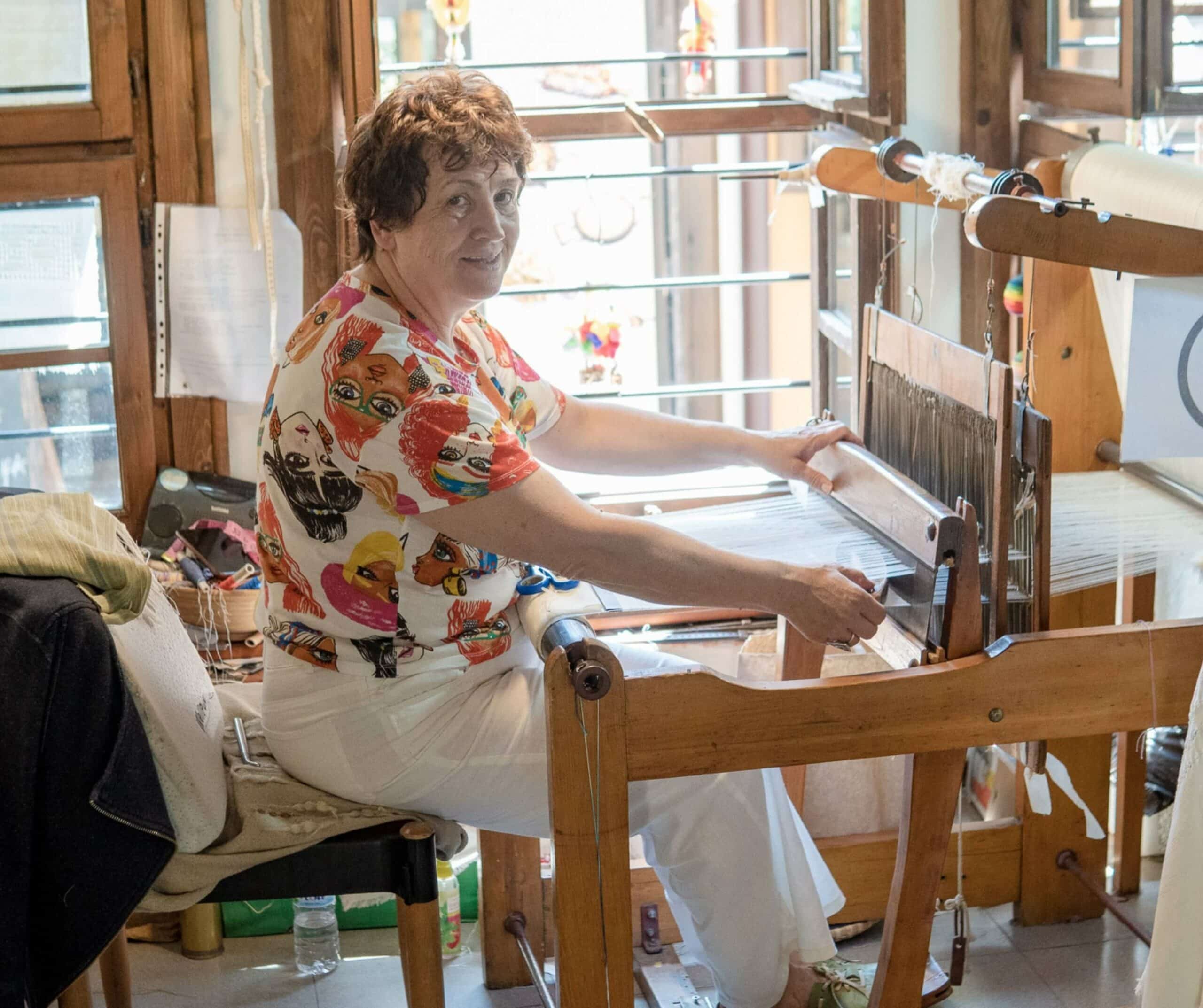
Pharmacy Museum Hippocrates | Address: ul. “Saborna” 16, 4000 Tsentar, Plovdiv, Bulgaria
The Pharmacy Museum features a huge collection of pharmacy and medical equipment, instruments, and medicines, dating back to the 19th and early 20th centuries. You’ll see a collection of antique medicine jars and bottles, as well as various medical instruments such as syringes, scalpels, forceps and basically anything that looks like they could be used to torture people.
I am so grateful that I live in the 21st century and not the 18th century, where getting a flu shot might have involved being strapped to a table and having leeches placed all over my body.
The best part of the museum is a recreated pharmacy from the late 19th century. It features an original wooden counter, antique cabinets, an old cash register, and a collection of old medicine jars and bottles. You can get a feel for what it was like to visit a pharmacy in the past and how medicine was dispensed.
You will also be able to wander upstairs to the pharmacists living quarters. I always assumed pharmacists lived above their shop in case of emergencies, but it could totally be because of ease – no crazy commutes. You just wake up 10 minutes before you need to open shop and walk downstairs.
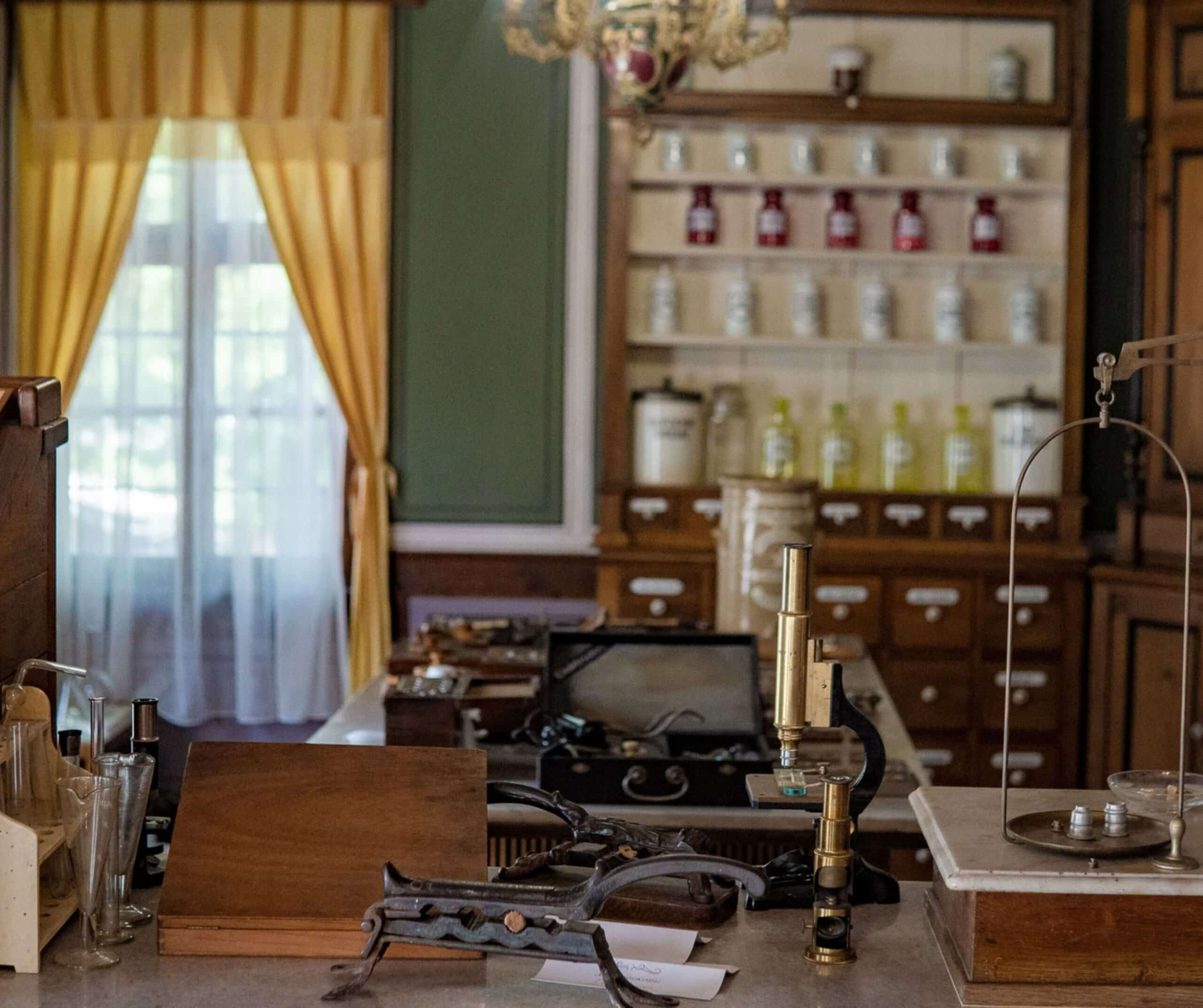
Nicola Nedkovich House | Address: ul. “Tsanko Lavrenov” 3, 4000 Staria grad, Plovdiv, Bulgaria
This is the most exuberant house on the block! The guy who lived there, Nikola Nedkovich, was a wealthy merchant.
Which seems to be the case for all the rich dudes in Plovdiv.
This is one of the few houses in old town where you can see some of the original owner’s possessions inside.
The first floor of the house is gorgeous, with carved ceilings and murals that haven’t been messed with by any restoration work. And upstairs, you’ll find Western European-style decor and a stunning collection of period furniture.
The yard has a cool underground tunnel connecting the cellar to the street and a covered passage leading from the kitchen to the main building. If I grew up in this house, I’d have a lot of fun with those.
Nicola did business in Istanbul and other big cities, and even became a District Governor later on. But sadly, after his daughter passed away, the house became public property. Luckily, the local government saw the value in this amazing house and turned it into a museum.
This house is a happening spot to throw a cultural shindig in the Old Town, They host events all year long!
Balabanov’s House | Address: ul. “Konstantin Stoilov” 57, 4000 Tsentar, Plovdiv, Bulgaria
Balabanov’s house was built by…wait for it…a wealthy trader. His name was Hadzhi Panayot Lampsha and he was one of the most famous merchants in Plovdiv.
During this house’s lifetime there were 3 owners, but the most important one was Luka Balabanov, and well, the house was then named after him or he just named the house after himself.
Unfortunately, the house got demolished in the 1930s, and rebuilt in the 1970s, thanks to old photographs taken of the house. Nowadays, the first floor is a permanent exhibit of Bulgarian art, but the second floor is where the party’s at. Back in the day, it was where rich people welcomed guests, but now it’s where they hold cool events like theater performances, and concerts. They even have this music festival called the International Balabanov House Music Days, which happens twice a year.
Art Galleries
Zlatyu Boyadzhiev Gallery | Address: ul. “Saborna” 18, 4000 Tsentar, Plovdiv, Bulgaria
The Zlatyu Boyadzhiev Gallery is a museum dedicated to the work of the Bulgarian artist Zlatyu Boyadzhiev. The gallery is housed in a historic building that dates back to the early 19th century.
Zlatyu Boyadzhiev (1903-1976) was one of the most prominent Bulgarian painters of the 20th century. He is best known for his depictions of everyday life in Bulgaria. From the countryside to the cities, he captured it all. His art is so lifelike, you’d swear you are right there with him. He was all about using warm colors and paying attention to even the tiniest details.
Other Things to do in Old Town
Street of Crafts | Address: It is located in the Old Town on Strumna Street
The Street of Crafts in Plovdiv is a charming-cobbled street lined with traditional Bulgarian houses that have been converted into shops and workshops where local artisans sell their handmade crafts.
It’s like a playground for grown-ups who love all things DIY.
While you wander the street, you can admire the various handicrafts on display, and even watch the artisans at work. Some crafts you can find on the street include pottery, woodcarving, painting, jewelry-making, embroidery, and more!
This is the place to buy all sorts of quirky, unique souvenirs that you can’t find anywhere else. Anything you buy here would make the perfect gift for that special someone (or even for yourself, I don’t judge!).
Hisar Kapia | Address: pl. “Hisar kapiya”, 4000 Tsentar, Plovdiv, Bulgaria
One of the most popular tourist attractions in Plovdiv’s old town is the medieval gate known as Hisar Kapia, meaning “Castle Gate” in Turkish.
It was first built in the 2nd century AD, but got a makeover during the 6th century under the rule of Justinian. Archaeologists think that only the foundations of the original gate remain.
After the Ottoman invasion, the gate’s importance dwindled, but it still had enough clout for some wealthy merchants to build their homes around it in the 17th and 18th centuries. Now, that’s some prime real estate!
Currently, it’s still standing strong and remains one of Plovdiv’s most iconic landmarks.

Walk Along Europe’s Longest Pedestrian Street
Plovdiv, Bulgaria, is home to a street that’s so long, you could walk for hours and still not reach the end.
Okay, that’s a bit of an exaggeration. The street’s only 1.8 km (1.1 miles), but that’s still a pretty good walk.
It’s called “Knyaz Alexander I” – named after the first prince of Bulgaria.
The street is lined with all sorts of shops, from the trendy to the tacky. You can buy anything from designer clothes to knock-off sunglasses, and everything in between. There are also plenty of street performers to keep you entertained.
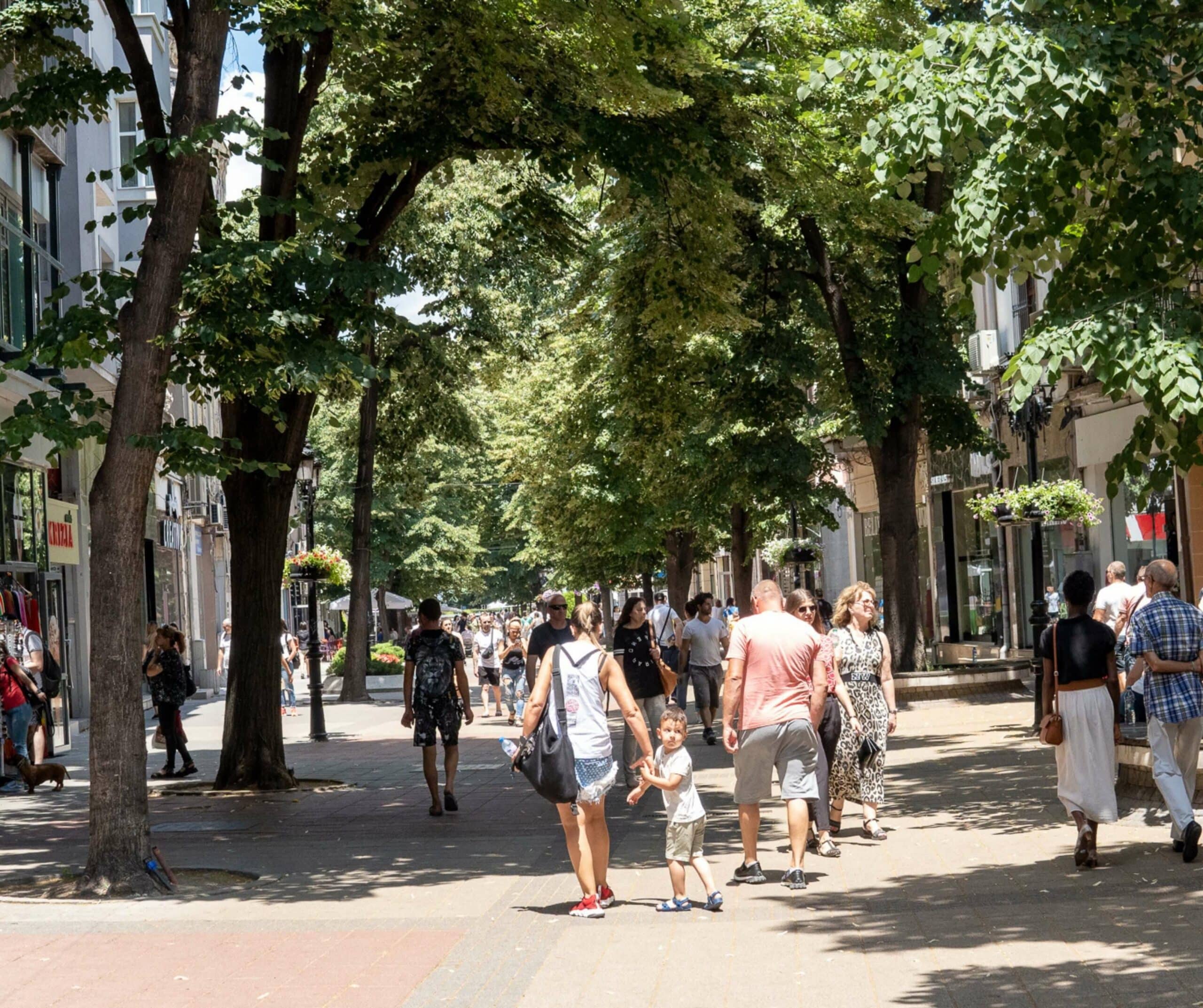
And if you are into people watching, this is the place to do it. Who else makes up stories about random people they see on the street?
That guy with the fedora? He’s definitely a secret agent. That woman with the poodle? She’s a retired ballerina.
Of course, there are a few downsides to the street. For one thing, it can get crowded. Like, Times Square on New Year’s Eve crowded.
Also, there’s not much to do besides walk. Sure, there are some cafes and restaurants, but they’re mostly of the grab-and-go variety. If you’re looking for a sit-down meal, you’ll have to venture elsewhere. And if you’re hoping for some exciting attractions, like a Ferris wheel or a roller coaster, you’re out of luck. The street itself is the attraction, which may or may not be your cup of tea.
Hike to Asens Fortress
Address: 4230 Asenovgrad, Bulgaria | Website
Asen’s Fortress, or also known as Petrich Fortress, is like something out of Game of Thrones, perched high on a rocky peak. It’s located near the town of Asenovgrad (if you’re not driving, you’ll have to walk from here). From the top, you can see a postcard pretty view of the Asenitsa River and all the valleys below.
Anyway, this fortress has had a bit of a rough history. It was originally built in the 5th-6th century by the Byzantines, but then the Bulgarians came along and destroyed it in the 13th century. They rebuilt it, though, and used it to keep out the invading forces.
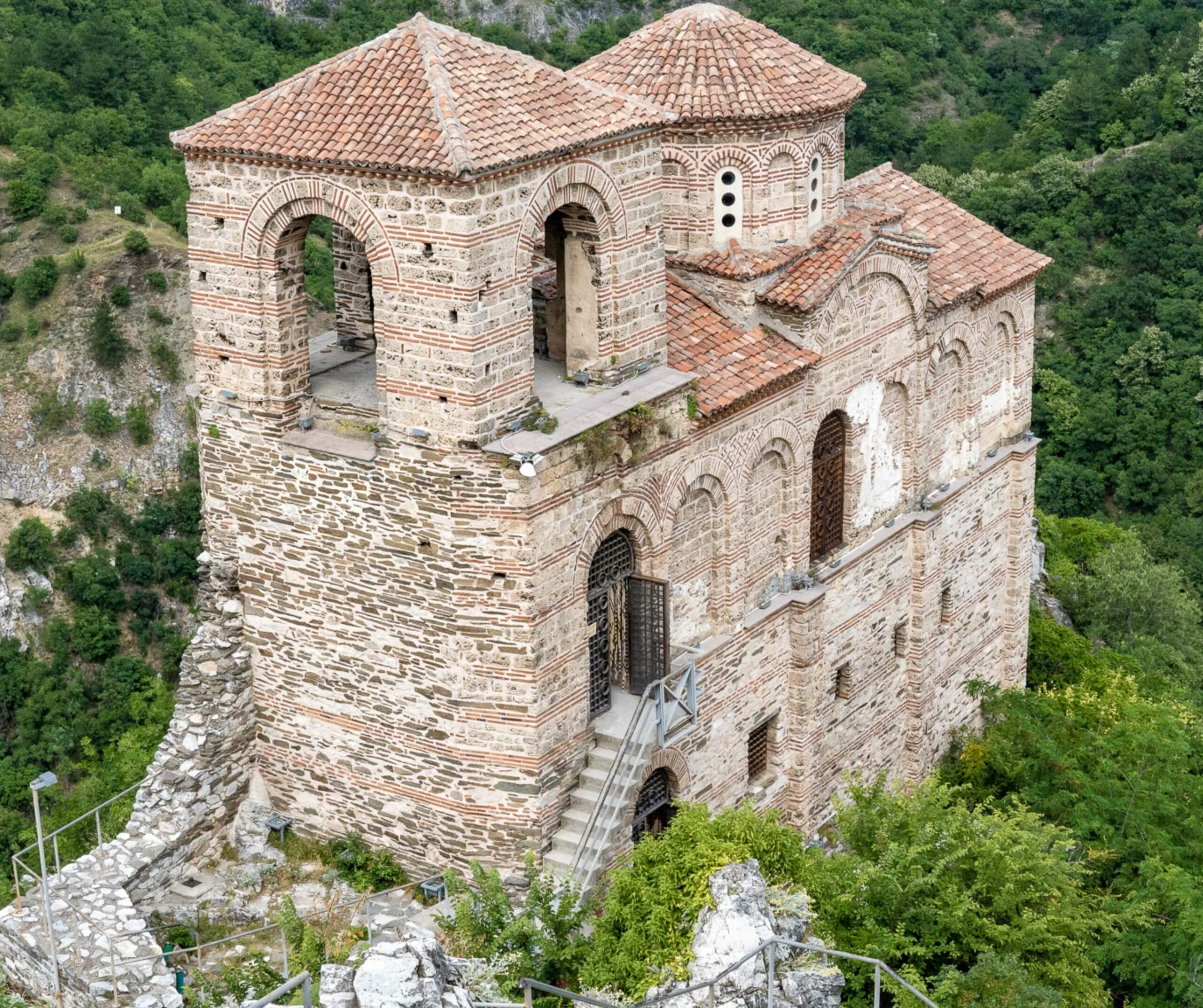
Then the Ottoman Empire showed up and destroyed it, as they tend to do. The fortress was left abandoned, but in the 20th century, the Bulgarian government swooped in and fixed it all up for tourists like us to enjoy.
This fortress has seen and experienced some brutal stuff.
Today, you can explore the fortress’s ruins, which include the remains of a church, a palace, and defensive walls.
Here are several ways to get to the fortress from Plovdiv:
- By car: You can rent a car or take a taxi from Plovdiv to the fortress. The drive takes about 30 minutes.
- By bus: There is a daily bus service from Plovdiv to the village of Asenovgrad, which is located near the fortress. From Asenovgrad, you can take a taxi or walk to the fortress (it’s about a 3 km walk).
- By train: you can take a train from Plovdiv to Asenovgrad and then take a taxi or walk to the fortress. Asens fortress is located on top of a mountain so if you decide to walk, just be prepared. It’st 3 km south of Asenovgrad and can be reached by following the signs or asking for directions.
- By organized tour: There are several tour operators in Plovdiv that offer day trips to Asen’s Fortress. This is a convenient option if you prefer to have transportation and a guide arranged for you.
- By hiking: If you enjoy hiking, you can take the trail that starts from the Bachkovo Monastery and leads
Attend One of Many Festivals
Plovdiv boasts a rich cultural heritage that spans over 8,000 years, from the ancient Thracians to the modern-day Bulgarians. Throughout the year, the city hosts a wide range of festivals and events that showcase its unique blend of history, art, music, and food.
One of the most popular festivals in Plovdiv is the International Fair, which takes place every year in September. This event attracts visitors from all over the world and features exhibitions, trade shows, and cultural performances. Another major festival is the Plovdiv Jazz Fest, which is held in November and where you can listen to the smooth sounds of the world’s top jazz musicians.
The Food and Wine Festival in May is a foodie’s paradise, showcasing the best wines, cheeses, and traditional dishes of the region. And if you’re into contemporary art, the Night of Museums and Galleries in September will let you explore the city’s museums and galleries after dark – spooky!
And for all you street culture enthusiasts out there, Plovdiv’s got you covered with festivals dedicated to graffiti art, breakdancing, and hip-hop music. The Kapana Fest in July is a must-see street art festival where artists from all over the world create vibrant murals and installations in the city’s historic Kapana district.
Attend Kapana Fest
I just happened to be in Plovdiv during Kapana Fest, and so happy I was! It seemed like everyone in Plovdiv was there enjoying the weather, music, and food! Here is a little about Kapana Fest in case you want to plan your trip around it or, like me, you just happen to be visiting.
Kapana Fest is an annual cultural and artistic festival that takes place in the Kapana district of Plovdiv, Bulgaria. The festival typically occurs in early summer and lasts for several days, showcasing a diverse range of music, art, food, and performances.
The Kapana district is known for its narrow streets and old architecture, and during the festival, it becomes a hub of creative activity. You can explore the various art installations and exhibits that are scattered throughout the area, enjoy live music performances by local and international artists, and sample traditional Bulgarian food and drink.
It’s like a giant playground for artists and culture vultures alike.
It’s a celebration of Plovdiv’s diverse culture and wild creativity, and the perfect spot for local artists and entrepreneurs to show off their skills.
Learn about Plovdiv’s Fascinating Roman History
Way back in the 1st century AD, the Romans came and conquered Plovdiv. The Romans were so impressed by the city’s three hills – Nebet Tepe, Dzhambaz Tepe, and Taksim Tepe – that they gave it a fancy name: Trimontium, which means city of three hills.
Trimontium was poppin’ in the Roman era. There was a bustling market, and tons of shops and slowly but surely they built a bunch of cool buildings too, like a theater, an amphitheater, a stadium, and even some temples.
The Ancient Theater was built over 2,000 years ago and could seat a whopping 7,000 people! And it’s still around and hosting shows today.
The Romans also built a massive stadium that could fit up to 30,000 people. It was used for all sorts of events, from athletic contests to other public shindigs.
Unfortunately, all good things must come to an end. The Goths and the Huns came in and crashed the party in the 4th century AD, bringing an end to the Roman period in Plovdiv. But hey, at least we still have all those sweet Roman buildings to check out and admire.
Stadium of Philippopolis ( 3d show) | Address: ul. “Hristo G. Danov”, 4000 Staria grad, Plovdiv, Bulgaria
Stadium of Philippopolis was built back in the 2nd century AD With seating for up to 30,000 spectators, it was the place to be in the Roman province of Thracia.
The northern curved part of the stadium, known as the sphendone, is still standing today! It’s been partially restored and is now one of the most famous sights in the city of Plovdiv. Currently, there is a 3d show that brings the stadiums past to life. You will be watching gladiator matches so real it will feel like you’re actually there.

Odeon of Philippopolis | Address: ul. “General Gurko” 14, 4000 Tsentar, Plovdiv, Bulgaria
Odeon, was built in the 2nd century AD during Emperor Hadrian’s reign. It was originally used for musical performances and other cultural events, with a seating capacity of around 3,500 people.
Over time, the Odeon fell into disuse and was eventually abandoned. Some parts of the theatre were even destroyed, buried beneath layers of sediment and debris.
Fast-forward to the 1970s and 1980s, where it was rediscovered during archaeological excavations. It’s since been partially restored, and now visitors to Plovdiv can check out the remains of this legendary venue, including the stage, orchestra, and several rows of seats.

Forum of Philippopolis | Address: pl. “Tsentralen” 1, 4000 Tsentar, Plovdiv, Bulgaria
The Forum of Philippopolis was built in the 1st century AD and served as the administrative, commercial, and social center of the city during the Roman period.
This forum was situated on a hill in the middle of the city and covered an area of about 11,000 square meters, surrounded by colonnades and with a massive open space in the center. This is where all the public meetings and ceremonies were held.
There was a large basilica at one end that served as a law court and a place for public gatherings. As the years went by, the forum underwent several changes, showing off the changing tastes and needs of the city’s rulers. During the Byzantine period, the basilica transformed into a Christian church, and during the Ottoman period, the forum served as a marketplace.
Nowadays, the Forum of Philippopolis is the place to be for all the history buffs and tourists visiting Plovdiv. You can see the ruins of the basilica, the colonnades, and other structures that are still standing to this day. The site even has a museum that showcases all the artifacts that were found during the excavation of the forum.
The Bishops Basilica Philippopolis | Address: boulevard “Knyaginya Maria Luiza” 2, 4000 Tsentar, Plovdiv, Bulgaria
This place is HUGE! Like, seriously big. We’re talking 83 meters long and 36 meters wide, making it the largest basilica from the 4th to 6th century in Bulgaria and one of the biggest in the Balkans. It took almost 4 years for archaeologists to dig it up.
The floors are covered in two layers of mosaic tiles and are a combination of different cultural influences, reflecting the local traditions and resources of the time. So, it’s not just a pretty floor, it’s a work of art that tells us so much about the development of mosaic art.
Go For A Wander in Tsar Simeon Garden Park
Tsar Simeon Garden is the primo hangout spot in Plovdiv, Bulgaria. It was designed by a landscaper named Lucien Chevalas way back in 1892.
This place is a giant green oasis in the heart of the city, covering a whopping 67,000 square meters. It’s named after the last monarch of Bulgaria, Tsar Simeon II.
This park has got it all, from meandering walking paths to stunning sculptures, and even a lake full of ducks. Plus, there are cafes and restaurants to keep your taste buds happy. The Singing Fountains are the best part. They put on an epic display every night in the summer, complete with music, lights, and water jets.
Plovdiv is lucky to have this amazing park in the middle of the city. It’s like a big ol’ beacon of culture and community.
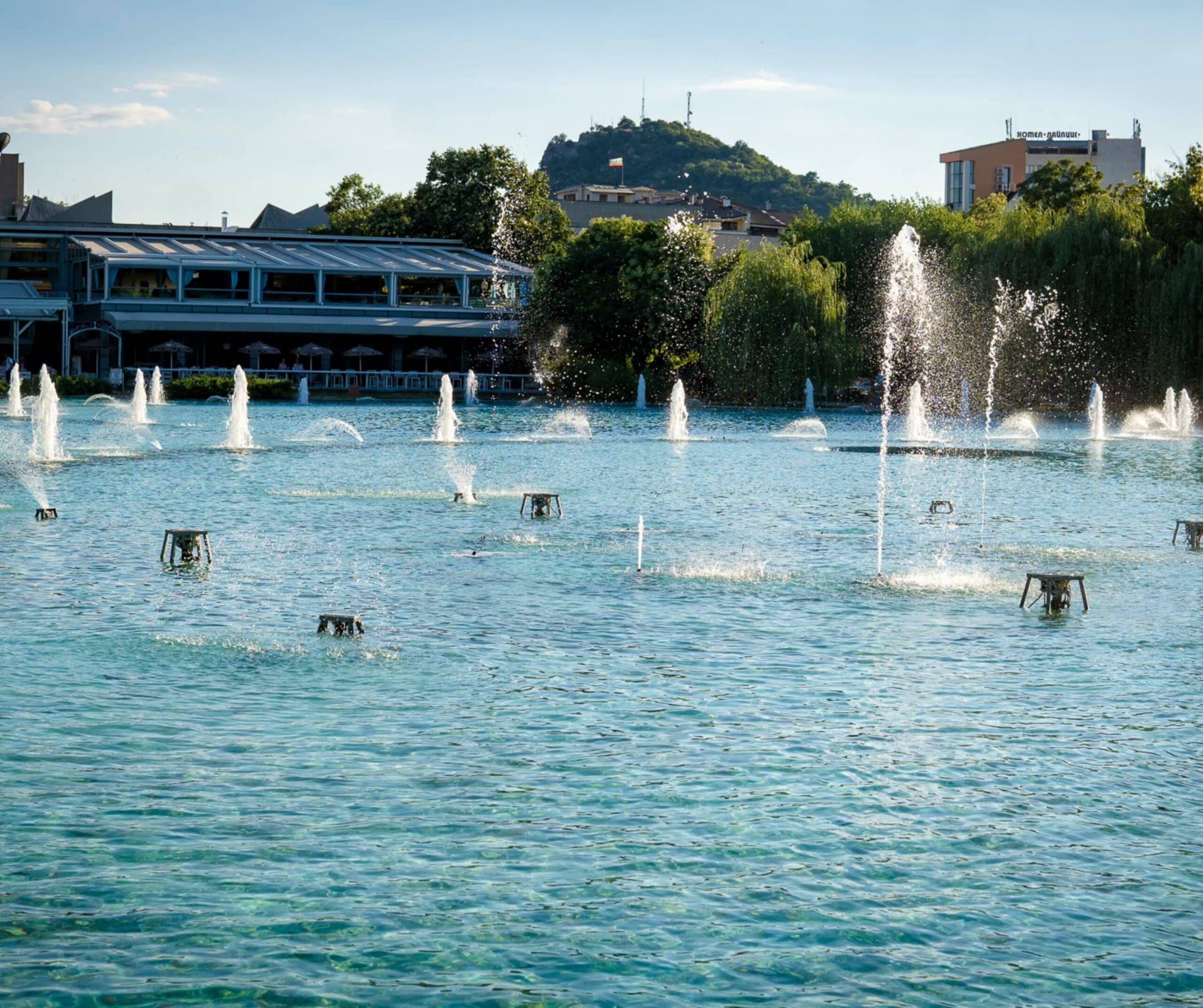
Hike Up Plovdivs Seven Hills
Plovdiv is known as the “city of hills”, and for good reason – it’s perched on seven of ’em. We’ve got Nebet Tepe, Bunardzhik, Sahat Tepe, Dzhendem Tepe, Taksim Tepe, Dzhambaz, and Markovo Tepe.
Now, these hills weren’t just good for getting a thigh workout – they also made Plovdiv a major player in the ancient world. They were handy for military defense.
Currently, you can climb to the tippy-top of four of them: Nebete, Bunardzhika, Dzhendem Tepe, and Sahat Tepe and soak in some stunning views of the city and its surroundings. And if you’re into ancient ruins and stuff (who isn’t, really?), you’re in luck – there are plenty of historic monuments and cultural attractions on these hills, like the archaeological remains of the city wall, and the Alyosha Monument, which was erected in honor of the city’s liberation from the Nazis.
These hills aren’t just rocks and dirt – they’re a big part of Plovdiv’s identity. The locals are super proud of their city’s unique topography. The hills also provide a natural barrier between different neighborhoods and communities, creating distinct pockets of local culture and tradition.
Nebete Tepe |
Nebete Tepe is considered the oldest settlement in Plovdiv, dating back to the Neolithic Age. This hill has seen it all – Thracians, Greeks, Romans, Byzantines, and Ottomans have all lived here throughout the centuries. It was so important that it became a hub of governance, trade, and culture.
Today, Nebet Tepe is a popular tourist attraction in Old Town. You can explore the ancient ruins and enjoy the beautiful views of Plovdiv from the top.
The hike up to Nebet Tepe is not too strenuous, but it does involve some steep uphill walking. There are several routes you can take to reach the top, but most visitors opt for the main entrance near the Ethnographic Museum. From there, you will need to climb a series of stone steps that wind their way up the hillside.
After you explore Nebete Tepe head to Rahat Tepe for a drink, food and a beautiful view.

Bunardzhika |
Bunardzhika stands tall at 70 meters, and provides panoramic views of Plovdiv and its surroundings.
You can check out the Alyosha Monument at the top of the hill, which honors the Soviet soldiers who fought in the Battle of Plovdiv during World War II. There is a also park with walking paths, benches, and playgrounds.
If you’re feeling peckish after all that monument-gazing, there’s also a restaurant. And for those of you who want to work up a sweat, there’s a staircase that’ll take you to the top of the hill. You know what they say, “no pain, no gain” – and in this case, the gain is a beautiful view of Plovdiv!
The starting point of the hike is at the foot of the hill. From there, you will follow a well-marked path that leads you through a park and then up the hill.
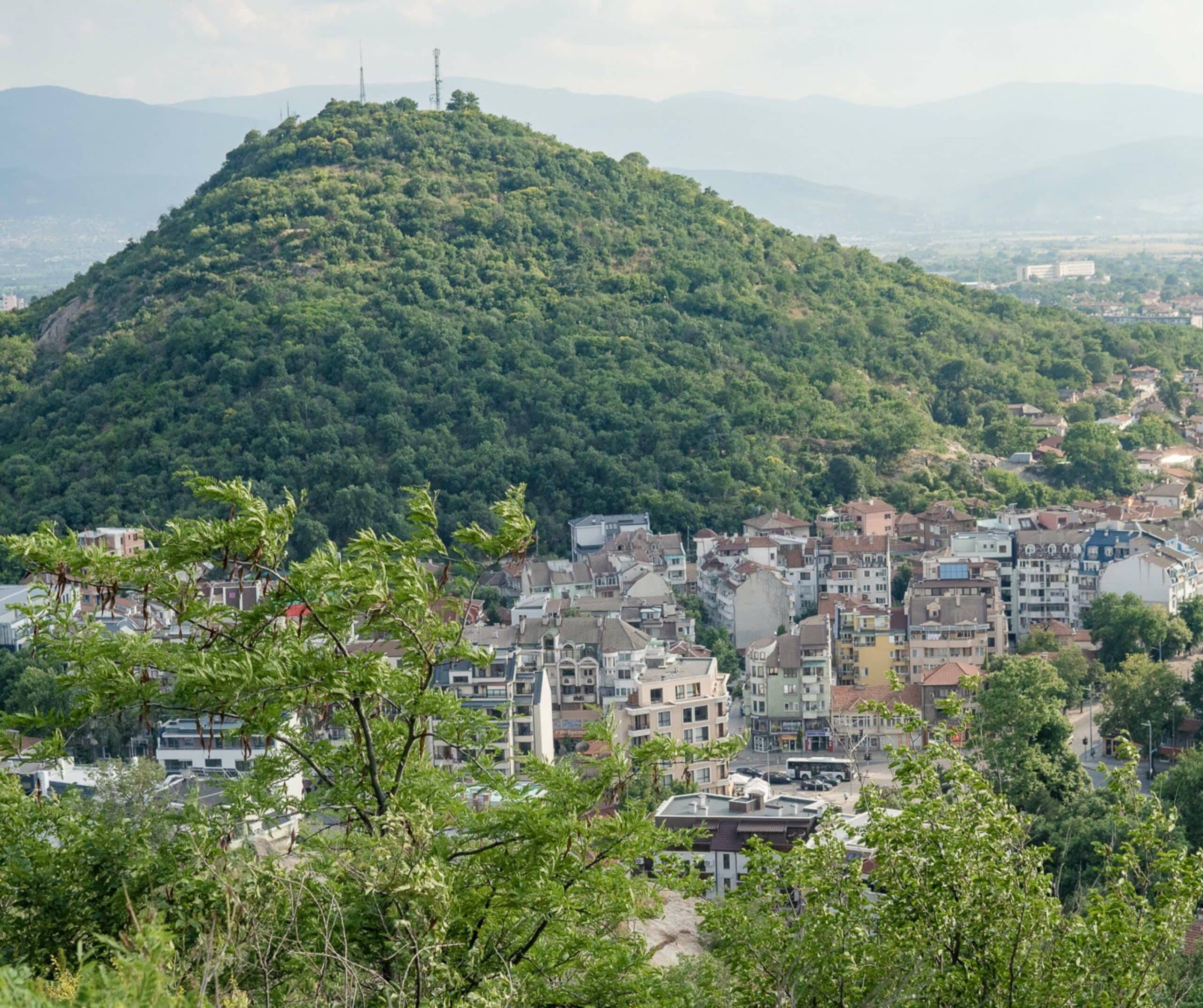
Sahat Tepe |
Sahat Tepe, also known as the Clock Tower Hill comes from the Ottoman Turkish words “sahat” meaning “clock” and “tepe” meaning “hill”.
It was built during the Ottoman occupation, waaay back in the 16th century. The clock tower used to just be used to keep an eye out for any invading enemies. But then, in the 19th century, someone had the idea to add a clock to the tower and boom – instant landmark status!
Dzhendem Tepe (Youth Hill) |
Dzhendem Tepe is also known as Youth Hill because back in the communist era, youth laborers paved the road up the hill and even built a swimming pool up top (which is now pretty run down).
Currently, you’ll find a meteorological Basecamp and a massive radio/TV/mobile-operator antennas cell-tower complex. And for some chillaxing, head down to the lowest part of Youth Hill for some park action and there’s even a children’s train (which has been chugging along since the communist era, no less).
Drink Coffee at a Friends Themed Coffee Shop
Address: ul. “Hristo Dyukmedzhiev” 16, 4000 Kapana, Plovdiv, Bulgaria | Website
So no one told you life was going to be this way…I’ll be there for youuu!
Well, if you’re a fan of Friends and can’t resist a good cup of Joe, then Central Perk is the place to be! This coffee shop is designed to make you feel like you’re right in the middle of the show. They’ve got the orange sofa, brick walls, and photos of the show plastered on the wall.
You will feel like you are there with the gang as you sip on your coffee. And don’t worry, they’ve got plenty of snacks to keep you fueled up for all your Friends marathons.
To be honest, I didn’t expect Plovdiv of all places to have a friends themed coffee shop. I am kind of shocked they haven’t gotten a cease and desist, but hopefully they never do. I love friends and finding this place was such a fun surprise.
Grab Some Honey From The Cutest Vending Machine
Address: Otets Paisiy 3, Plovdiv | Website
Vending machines these days sell some pretty wild things, but this is the first time I have come across a honey vending machine. What first caught my eye was the cuteness of the place. It was pink with paper bees hanging from the walls.
This vending machine had 15 flavors of honey to choose from and some pretty unique flavors if I do say so myself. I got the “creamed honey with strawberry” and “hot n numb”. Some other flavors of honey sold are: Honeydew honey, honey with rose, and even honey with turmeric and black pepper.

At Bulgarian Honey Company, they only select the best from local beekeepers who know their stuff. And not only that, they’re making a positive impact on the community and environment too! Their mission is to spread the sweet love of Bulgarian honey and make this country the buzz of the world!
I know I have probably already convinced you to buy some honey when you visit Plovdiv, but the story behind Bulgarian Honey Company is actually pretty sweet (pun definitely intended).
It all started a century ago in 1920 when Atanas and Zlata got the sweetest wedding gift ever – a beehive! Little did they know, they were living in honey heaven – Bulgaria, baby!
Their whole family was buzzing with beekeeping fever, except for their great-grandson, Mitko. Poor Mitko developed a severe allergy to bee stings at a young age. But on his wedding day, he and his bride Jen stumbled upon the family apiary deed and felt the honey calling their names.
Now, you’d think a couple with successful careers in Silicon Valley would be nuts to pack up and move to Bulgaria to become beekeepers. But not these guys! They were ready to take on the sticky challenge and continue their family’s legacy of honey-making.
So if you want to support this amazing family and their honey, definitely stop by!

Where to Stay in Plovdiv
Boutique Hostel, Old Plovdiv | Address: ul. “Chetvarti yanuari” 3, 4000 Tsentar, Plovdiv, Bulgaria
This building the hostel is housed in was built in 1868. It belonged to a super-rich tobacco merchant (no surprise there), so you know it’s fancy. The floors of the house are so old, they’re practically antiques themselves – 130 years! But the furniture was my favorite part – authentic antique beds and wardrobes that were purchased from local antique shops and fixed up by restorers.
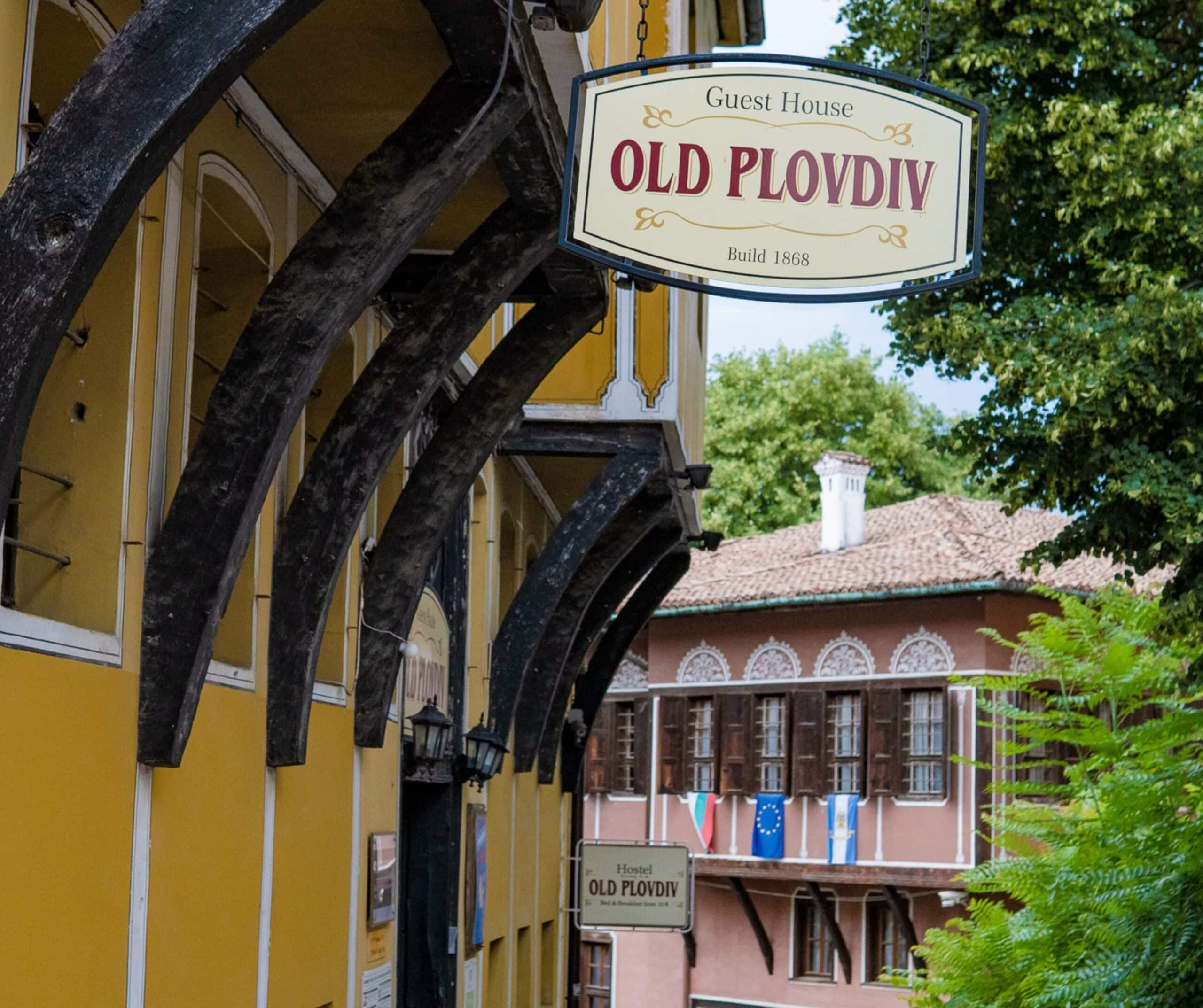
The hostels location is so central, you can practically touch the city’s landmarks from your window. They are situated right in the heart of the historical old town’s district, just a stone’s throw away from museums, and art galleries.
Why on earth do some hostels think that serving up weak coffee and stale bread is a good breakfast?
Boutique Hostel Old Plovdiv had a breakfast spread worth getting out of bed for. In fact, it was one of the best I have had at a hostel. They’ve got everything from bread and cereal to fruit and olives, and they give you your own plate which includes two kinds of cheese, four kinds of meat, and even unlimited espresso. And if that’s not enough, there’s an exposed Roman wall in the dining room. How cool is that?
There is also a lovely courtyard in the back that can get lively in the evenings with other hostel guests. I met so many people by just sitting out there. We played drinking games and then went out together.
Atlas House Luxury Suites | Address: 4000 Tsentar, Plovdiv, Bulgaria
Right before I was about to head home, after traveling for several months, I booked a room at Atlas House and absolutely loved my stay. The building is a stunningly renovated 19th-century masterpiece, located in the city center.
There are seven luxury suites which are a perfect blend of modern and traditional design, so you can enjoy the best of both worlds. Each suite is spacious and equipped with all the bells and whistles, including air conditioning, flat-screen TVs, and high-speed Wi-Fi.
And let’s not forget about the most important meal of the day – breakfast! Breakfast is served in their on-site restaurant, so you don’t have to worry about going hungry.
They are within walking distance to all the top attractions in Plovdiv, like the Roman Theater and Ancient Stadium.
Note: There is no elevator and a lot of steep stairs, so if you have a heavy bag and end up on the third floor, it will be quite a trek.
For more accommodation choices in Plovdiv, search for hotels below!
Follow Me!
Was this article helpful to you? Well, go ahead and save it by pinning it so you can reference it later on.




First off, if you want to browse all my favorite travel resources, check out my Travel Resources page.
Trip Planning: I have put together the ultimate trip planning guide that will walk you through everything you need to know to plan your perfect trip.
Book your Flight: Check out Skyscanner and Momondo! They can have great deals. Airfarewatchdog is also a favorite of mine. I get notified by email every time there is a good deal from my local airport.
Book your Transportation: Wanderu is usually where I check first. They check hundreds of different transportation companies all over the world and find you either the best bus or train deal. Flixbus is one of my favorite cheap options for Europe. The buses generally aren’t too bad, and they go to most countries around Europe. It’s the perfect option for short distances. Train travel is my favorite mode of transportation, and I always use Rail Europe to book my tickets. The Eurail pass makes Europe train travel super affordable.
Book your Accommodation: I created a platform called Just Wndr that allows you to find and book hotels for up to 70% off! All you have to do is sign up with your email, and then you have access to thousands of hotel deals for a fraction of what you would pay on other booking sites. On a budget and looking for cheap accommodation? Hostelworld is my preferred site to book cheap and reliable hostels. Hotwire has a fun mystery to it. It’s a great site to use for last-minute bookings. They don’t actually tell you the name of the hotel when you are browsing. You will just get the area of the city it’s in, the price, and how many stars it has. I love the surprise aspect of it!
Book your Travel Insurance: Getting travel insurance is such a crucial part of preparing for a trip. You never know what could happen and why take the risk? Before I travel anywhere I always book my insurance through Safety Wing.
Book your Activities: Now, you have planned all the logistics, time to think about what you will do once you get to your destination! These are a few of my favorite trip planning sites. I always use Get Your Guide when I am looking for tours. I have booked cooking classes, day tours and so much more through them and absolutely love the immense selection they offer in cities all over the world! Pinterest is great to get travel inspiration and plan an upcoming trip or share inspo with friends and family. I use Trip Advisor to plan itineraries for what I want to see & do in each city. I also use them to read reviews on restaurants and hotels too.
Store Your Luggage: Do you have a long layover or a late flight and need to store your luggage? Luggage Hero has got you covered. You can book luggage storage in more than 35 cities worldwide for as little as $1 an hour or $8 for the day.

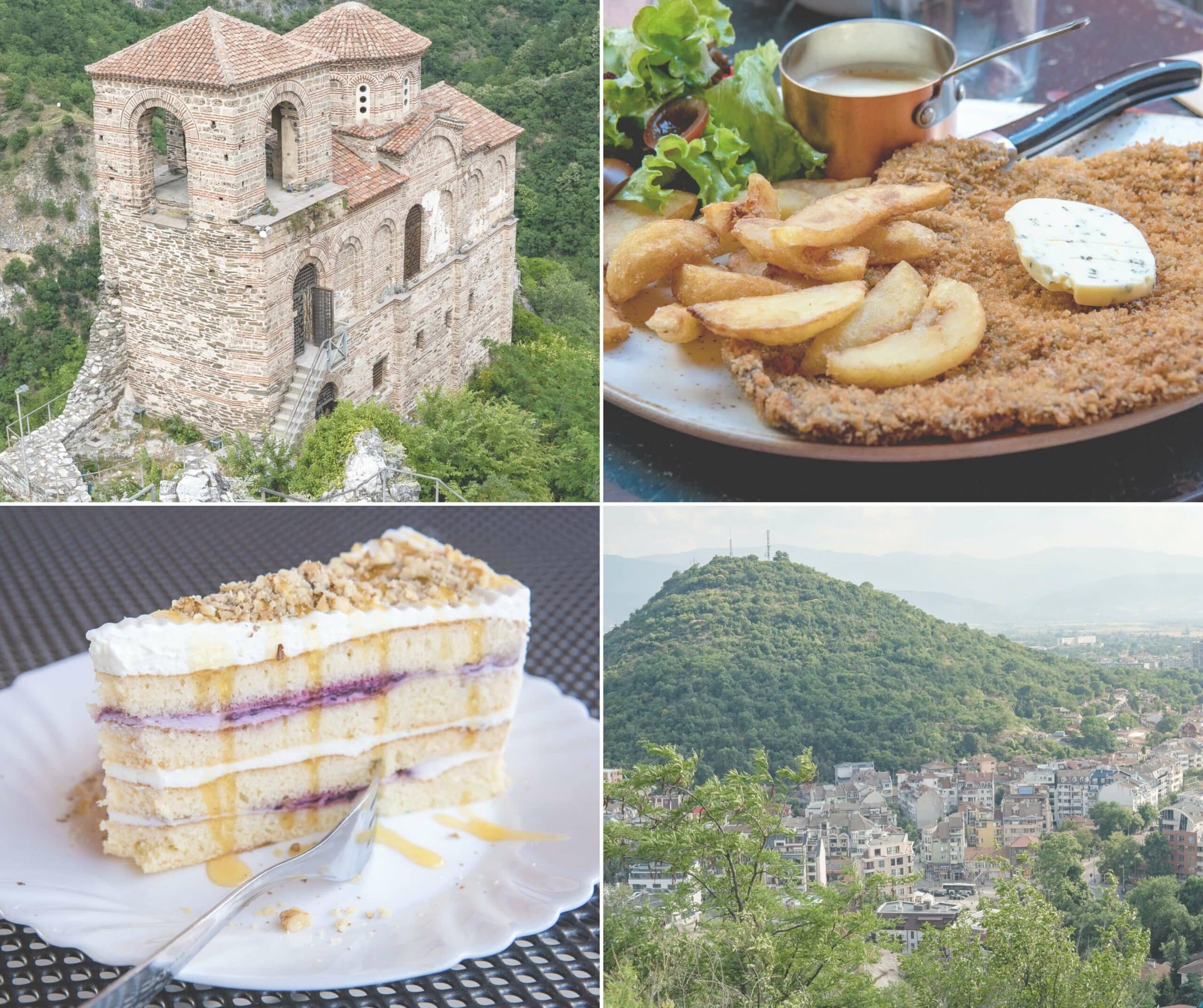

The food looks amazing, especially the cakes and donuts. Yum!
The food was so good! I still dream about everything I ate.
I haven’t been to Bulgaria yet unfortunately but really want to go. Besides Sofia, I will definitely add Plovdiv to my list too. Thanks for sharing! :)
Of course! I hope you are able to go someday. It is such a beautiful country and so underrated!
I haven’t been to Bulgaria yet, but it’s on my list. As it is one of the more affordable countries left in Europe 😄 So will definitely be saving this guide!
I loved the affordability! After spending 2 months in Barcelona, I was living like a queen haha.
Fantastic guide to somewhere that is now on my list of places to visit. Such comprehensive information about a great range of activities. The museums and hiking opportunities sound excellent, as does a trip to the Rose Valley.
Thank you so much! Plovdiv is such a beautiful city. I am dying to go back.
Lots to explore but the food pics definitely make me want to try it!
I would go back just for the food!
This is would an fascinating trip, especially Bachkovo!
What a great and comprehensive guide! I love the Rose Museum and the Roman ruins. Looks like a fantastic destination!
Thanks so much! It’s crazy to think that Plovdiv is one of the oldest cities in Europe!
I’d love to see Bulgaria – going to Europe in June but won’t make it this trip!
Hopefully you can visit one day! There is so much to do and see.
Wow — what an incredibly detailed guide. Well done! I have never been to Bulgaria, so I loved learning more about this country in your guide. I would love to “stop and smell the roses” and eat one of those delicious looking donuts. Yum! I am a big history lover so I would definitely visit the history museum as well :)
I am glad you enjoyed the guide!
I would definitely want to attend the Kapana Fest in July. It sounds like an incredible event to see artists from all over the world create vibrant murals and installations in the city’s historic Kapana district. Does the city also offer a street art walking tour?
I literally knew absolutely nothing about Bulgaria before I read this. Now I see that it is incredibly cute, beautiful, and delicious there. Definitely adding it to my list now. Thanks for the inspo!
So detailed, I love all the photos, the colours of the train where so vibrant. Also the food looked delicious.
Thank you so much! Plovdiv is such a vibrant city.
That’s a lot packed into a fairly small city! Good to know about the cobbles – bummer you had to learn the painful way :(
That was definitely a painful lesson and one I never want to repeat, haha.
The food looks so good! There’s plenty to do in and around Plovdiv. The making of rose oil sounds interesting.
Plovdiv, Bulgaria is definitely on my list for sometime in the next couple of years. Thanks for the info! Pinning!
I hope you make it! I dream about visiting again every day.